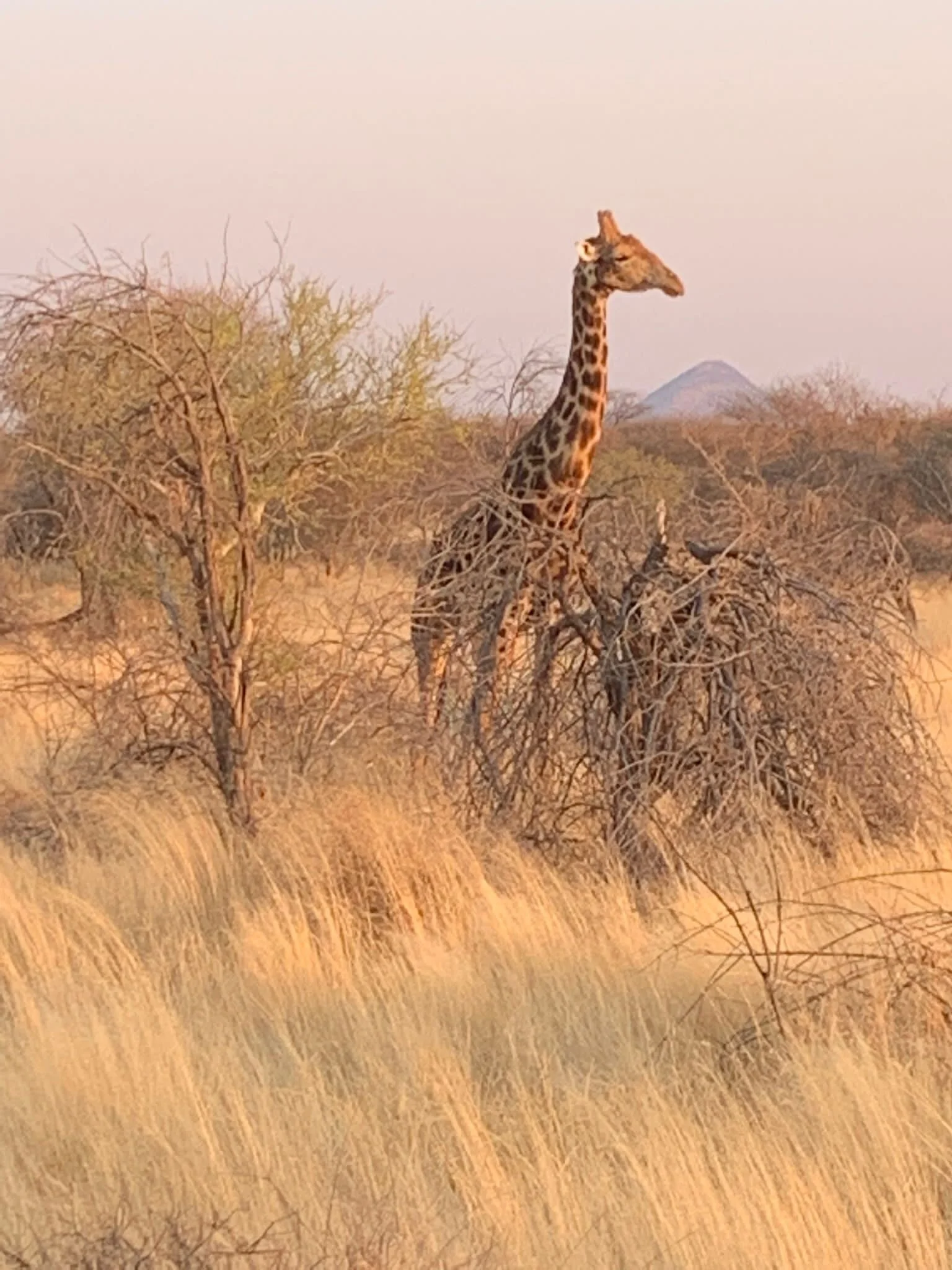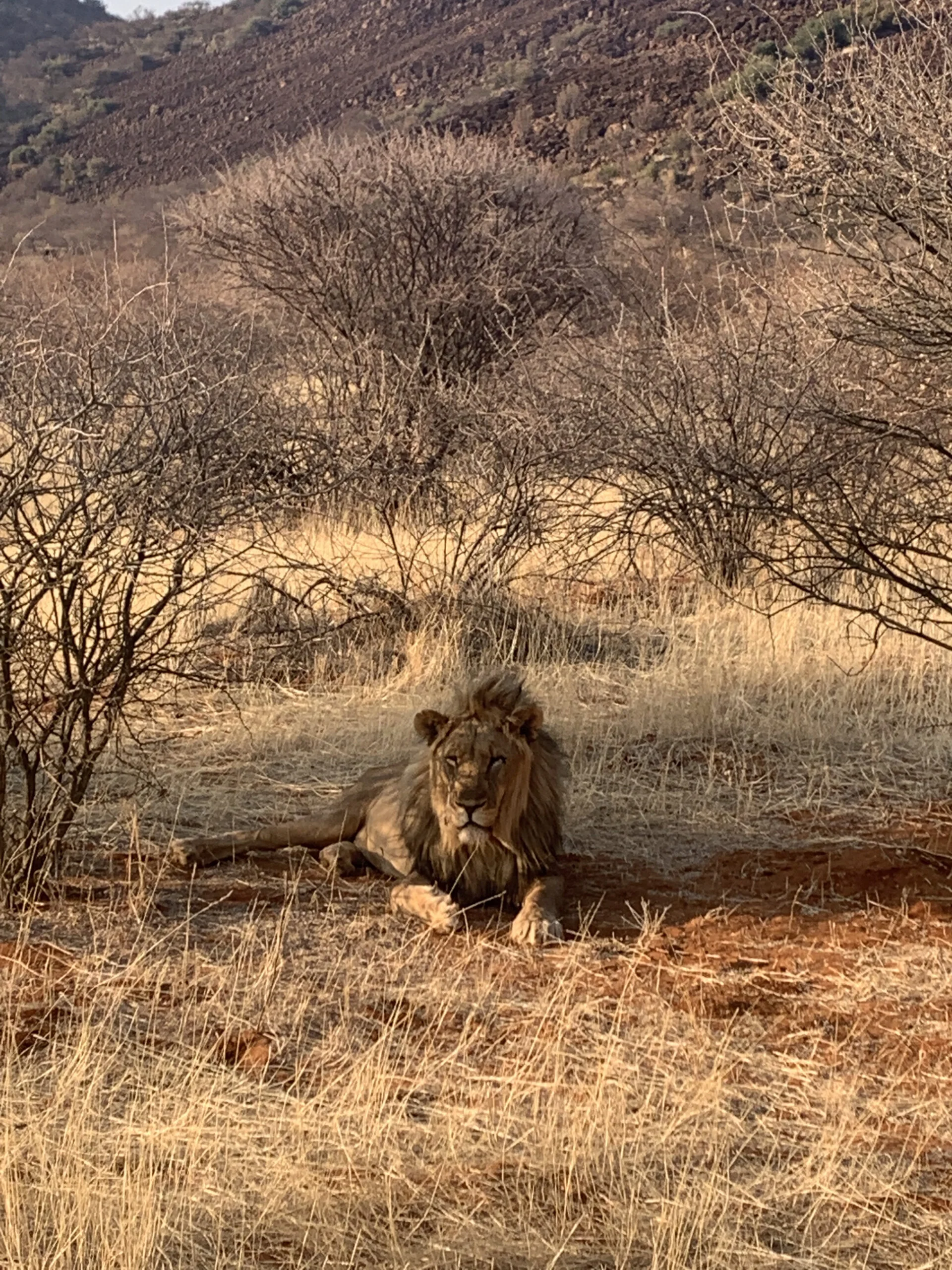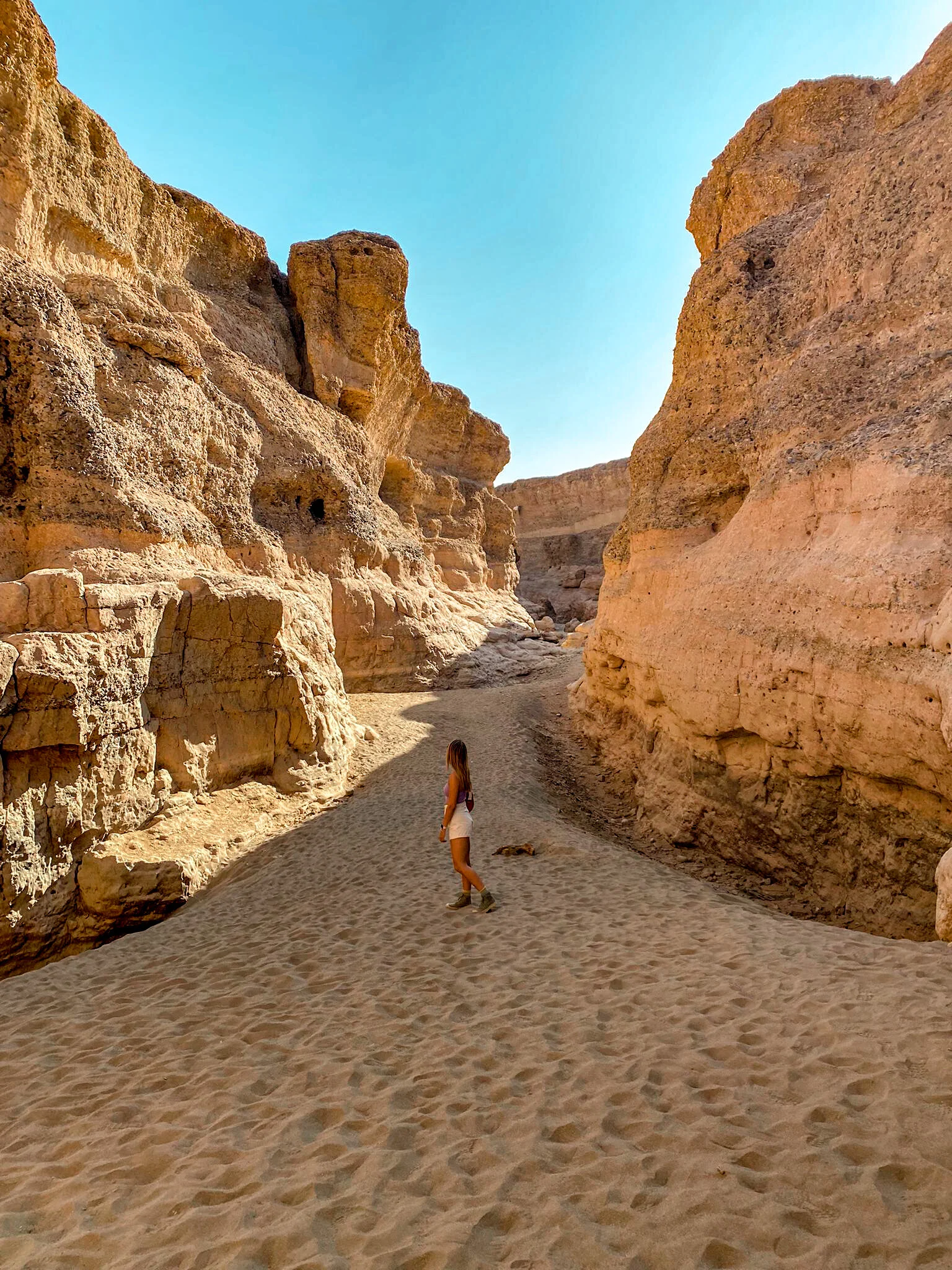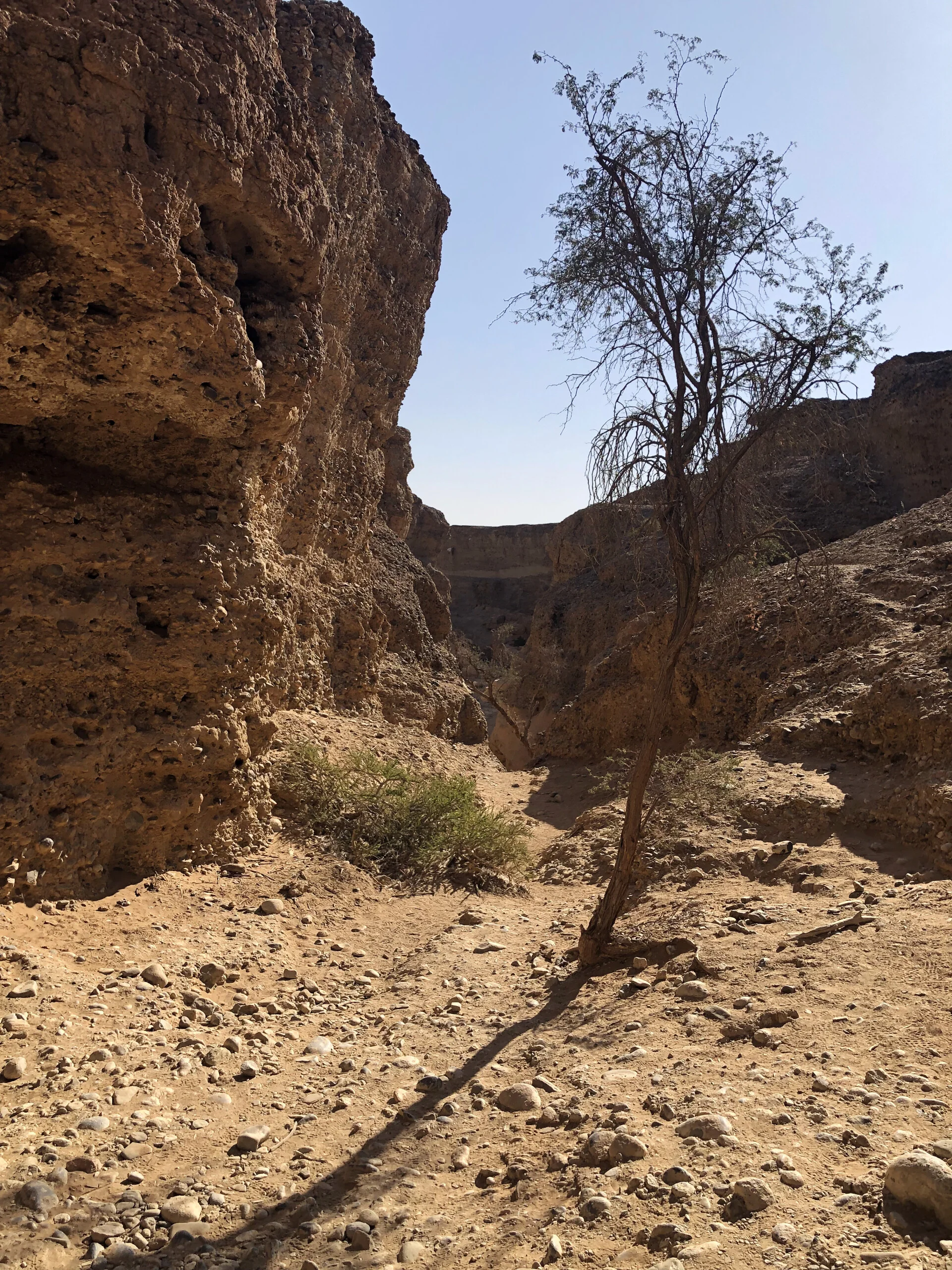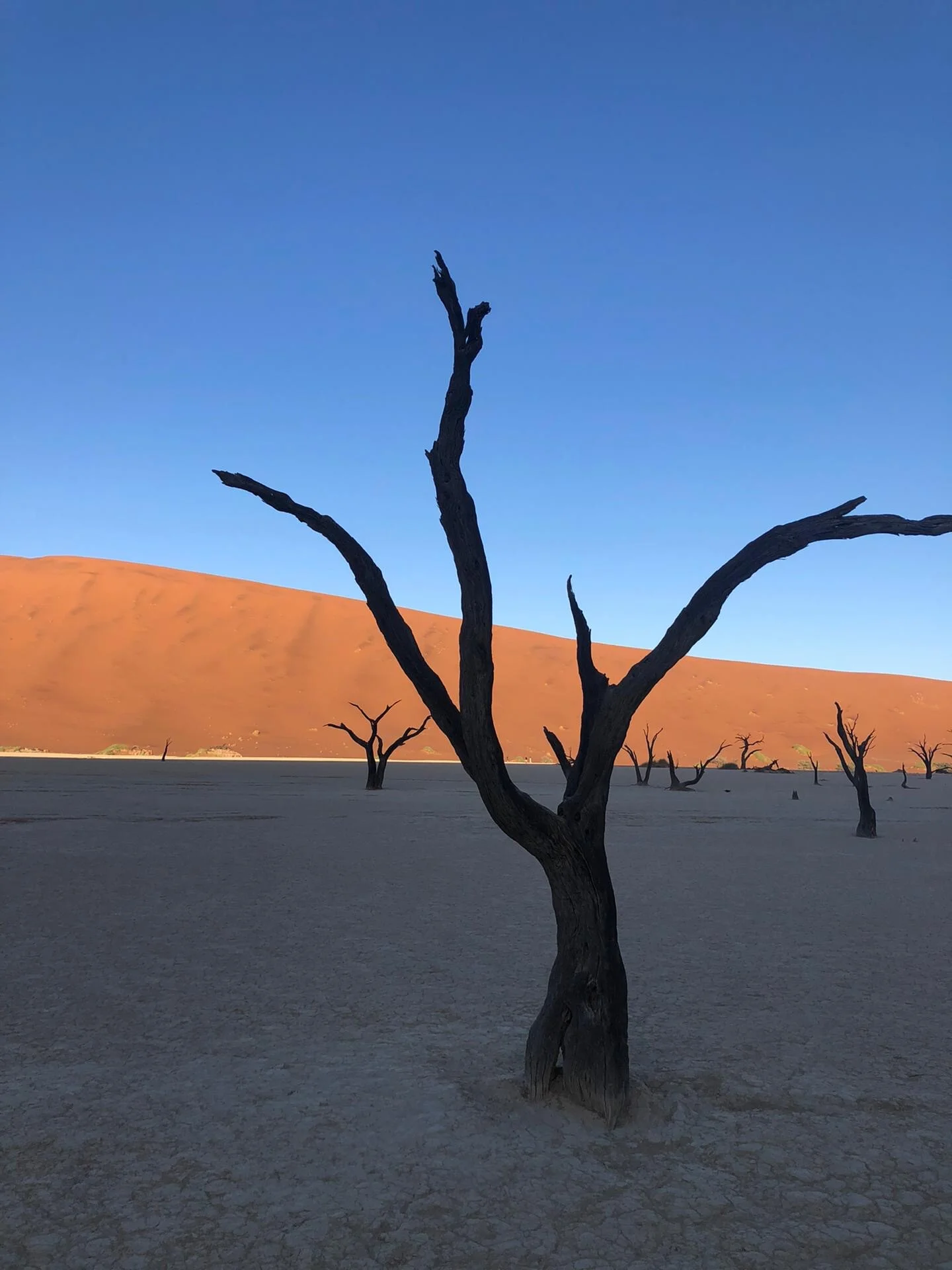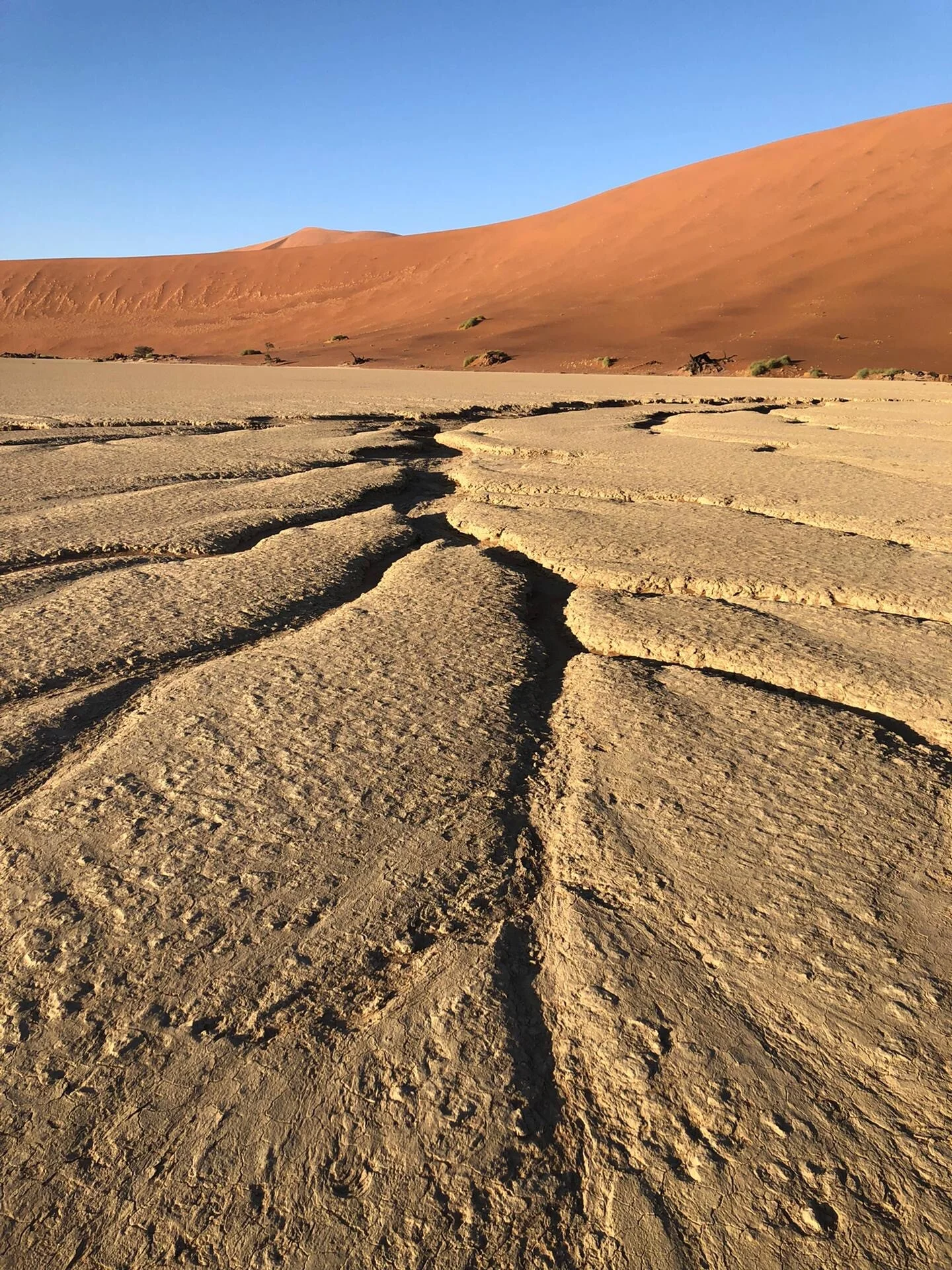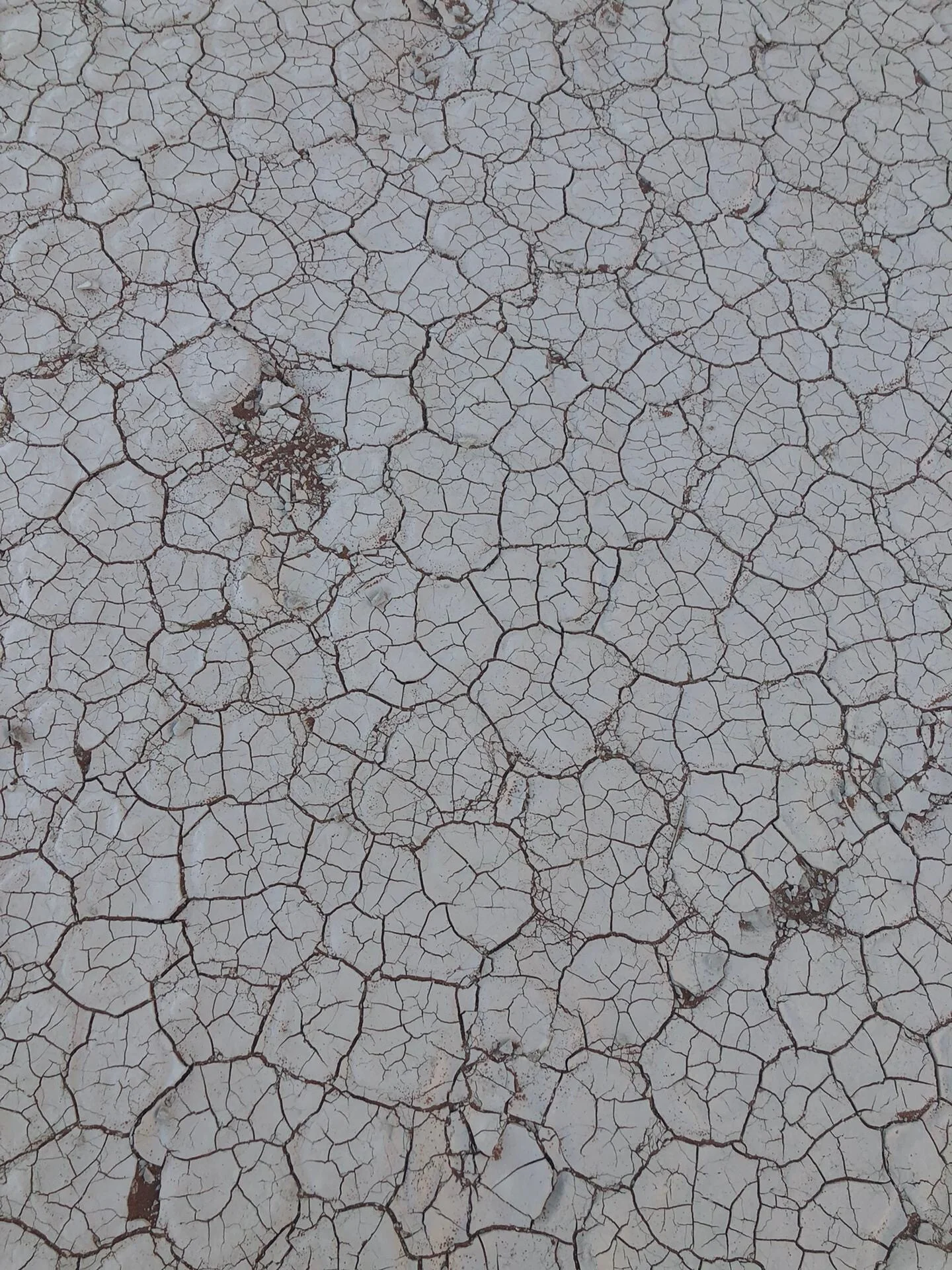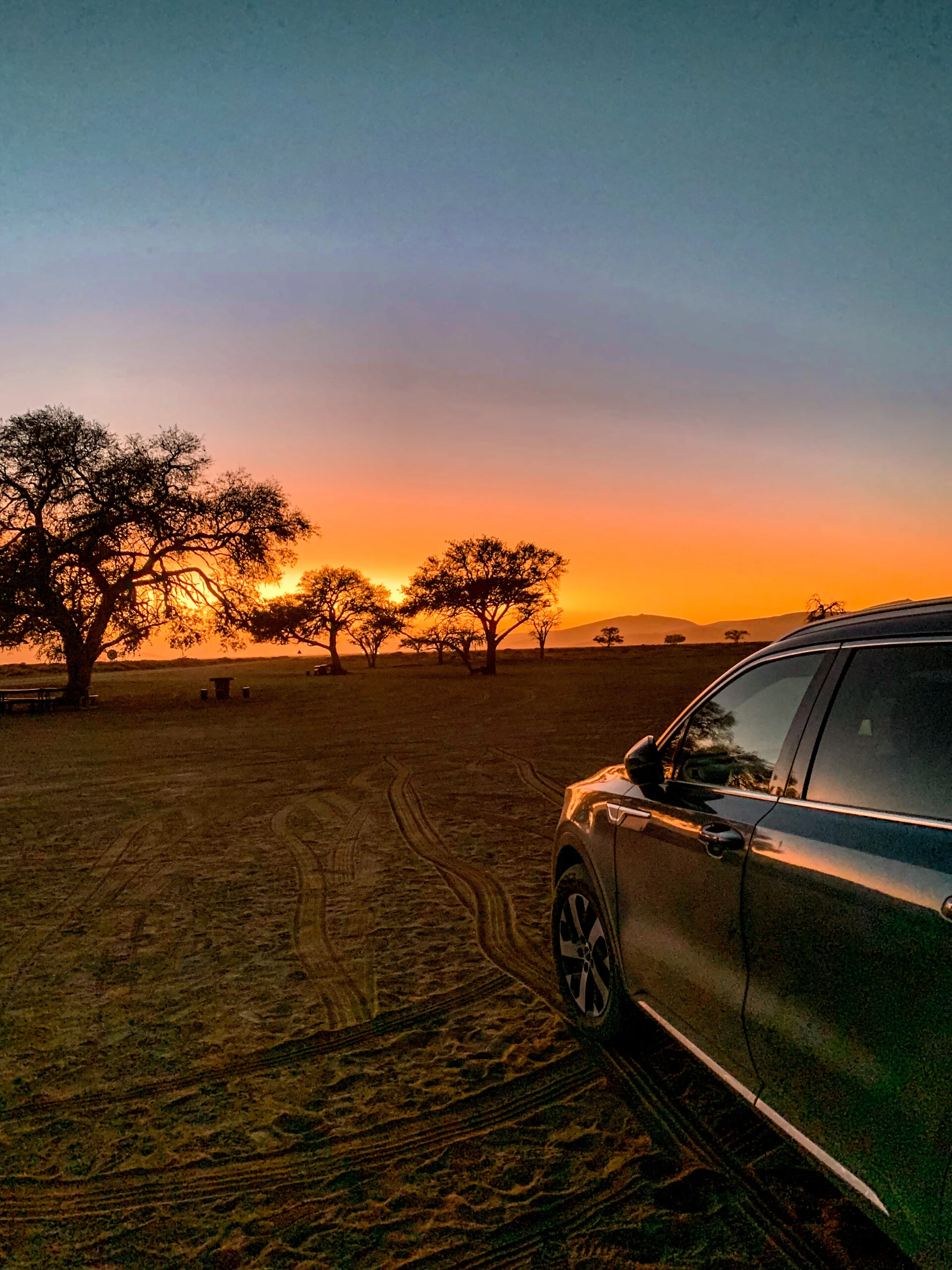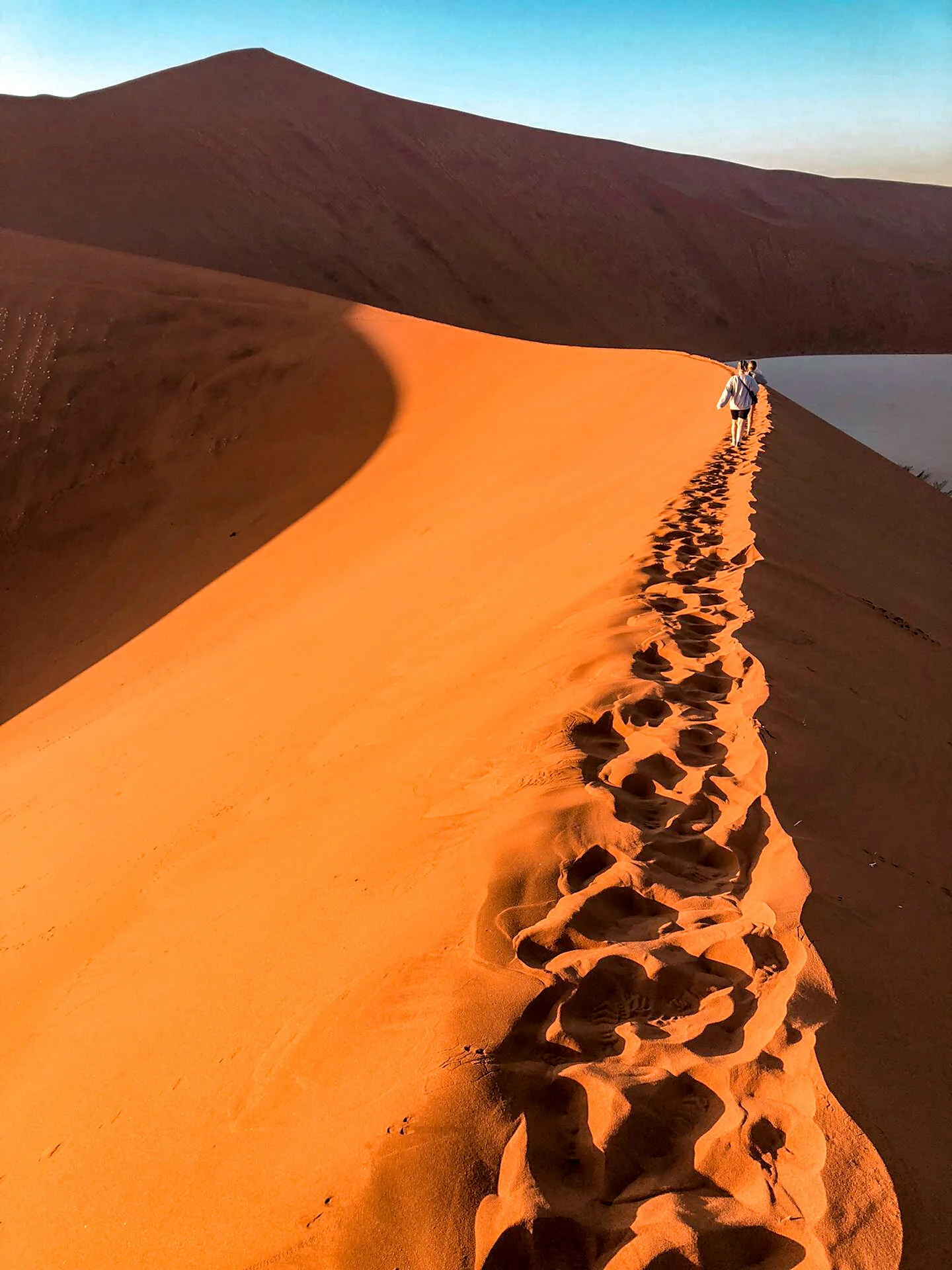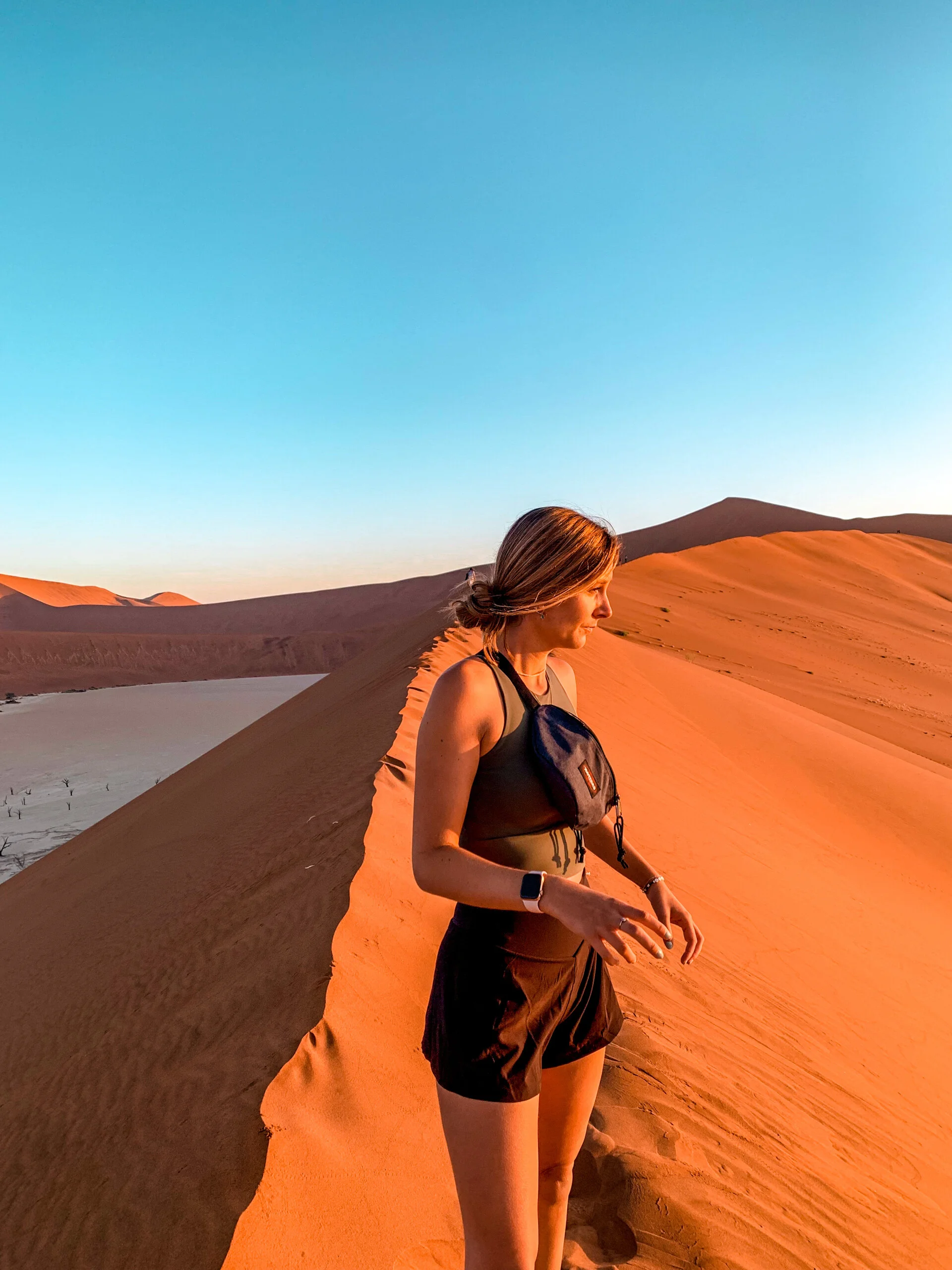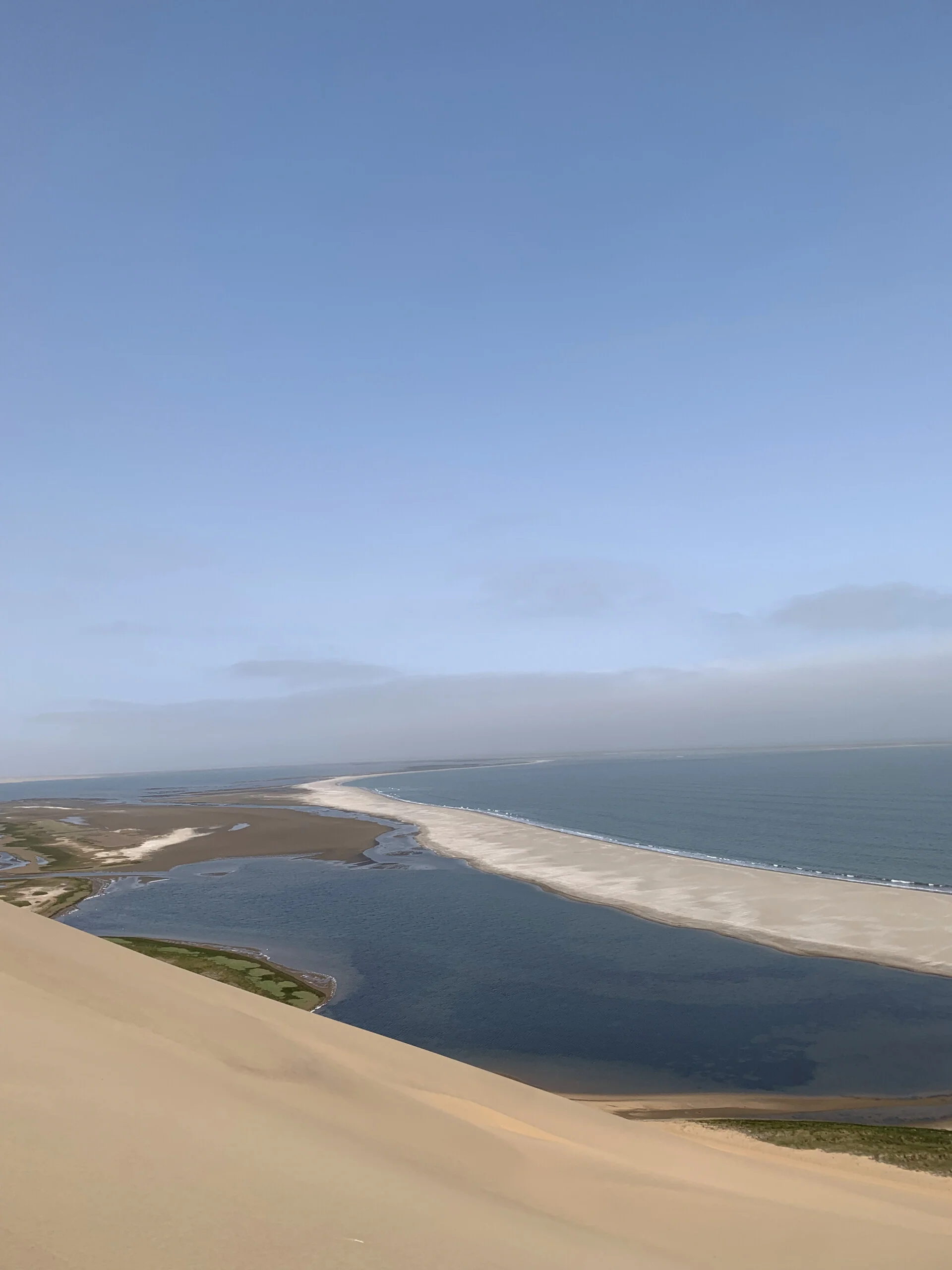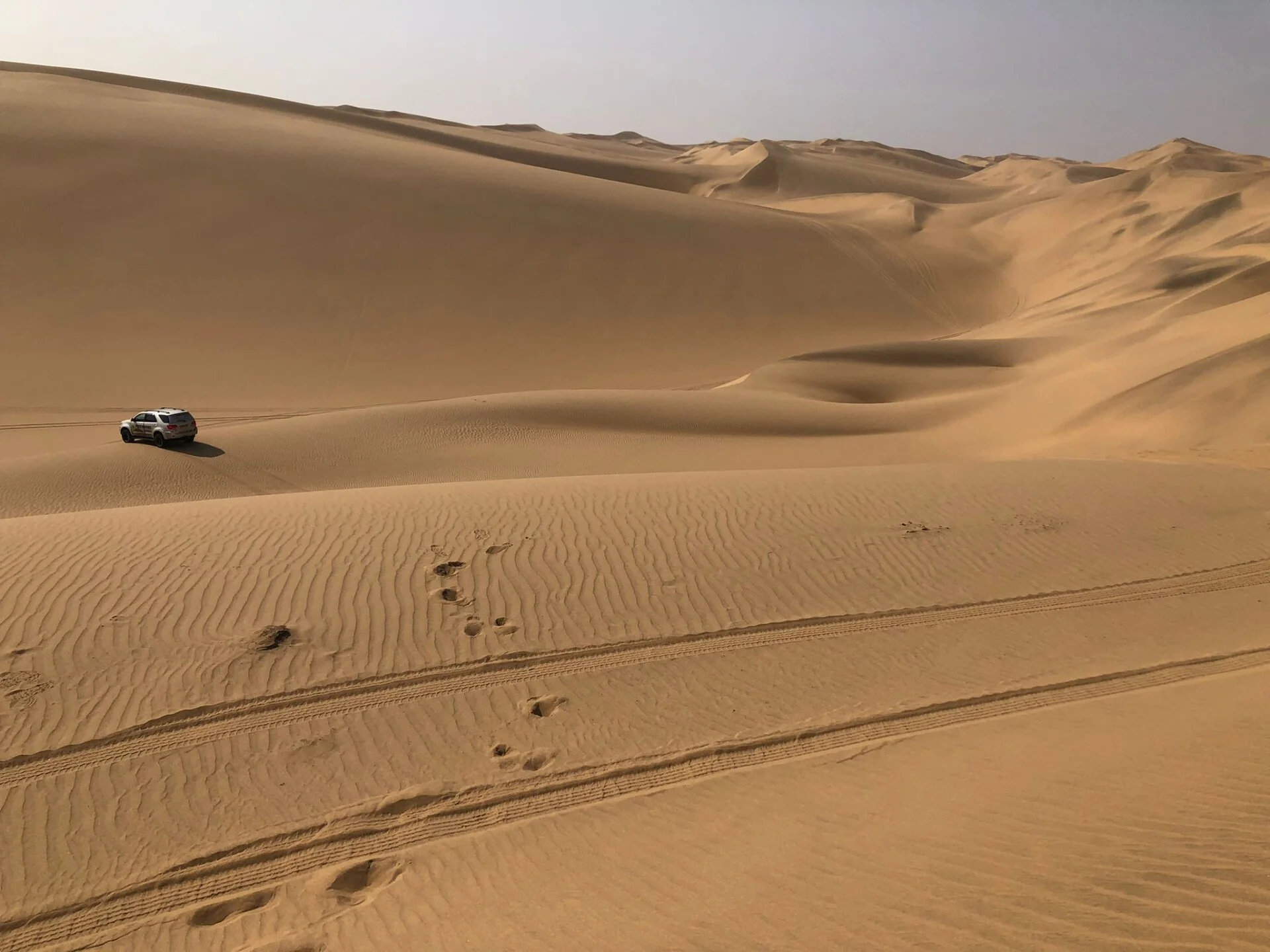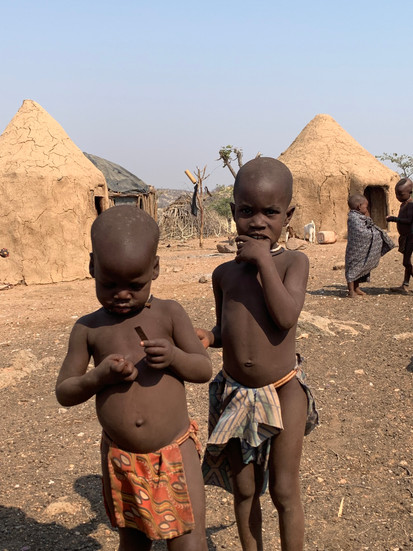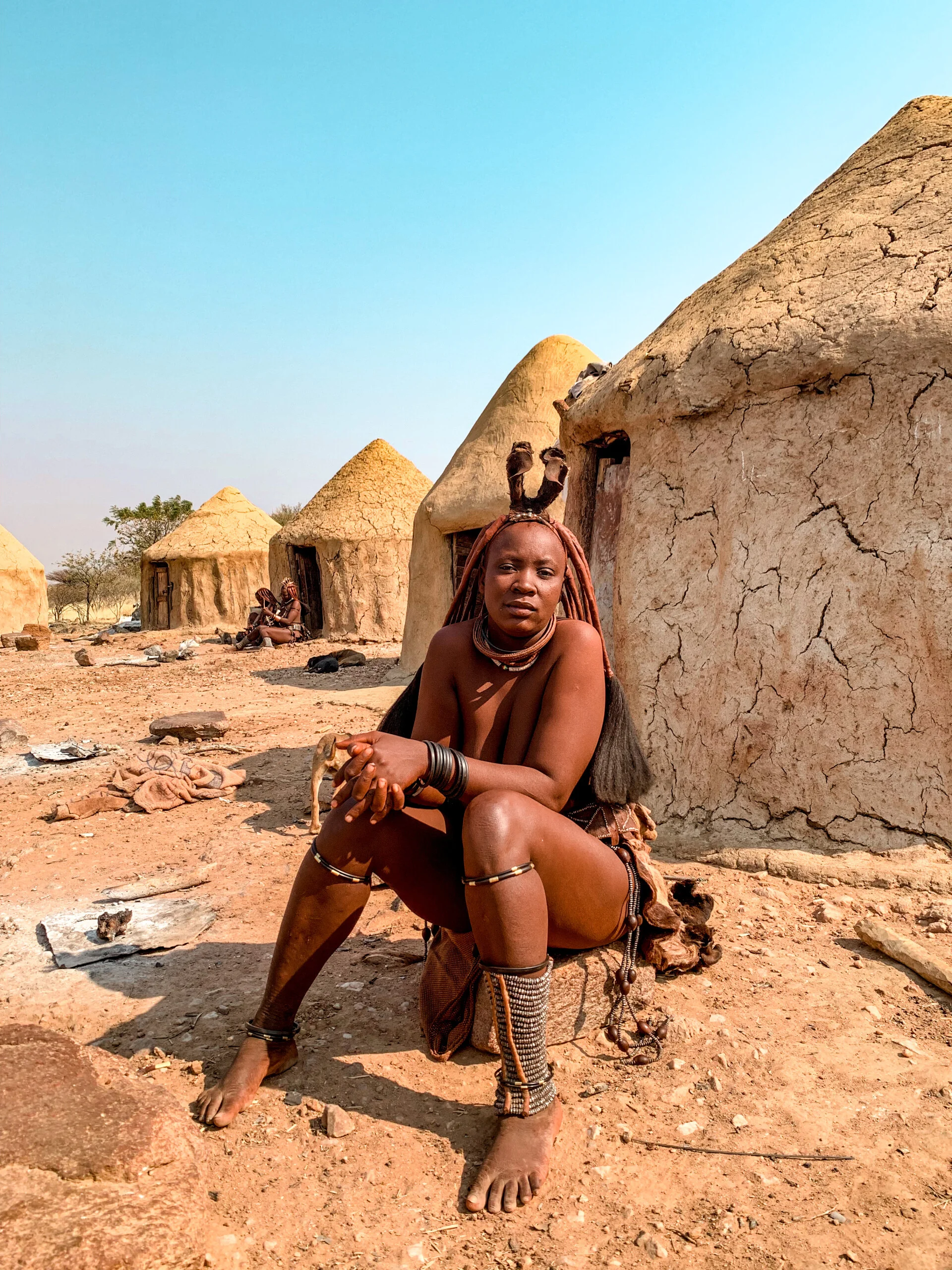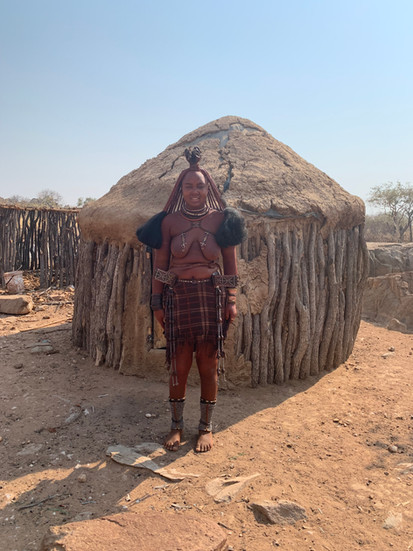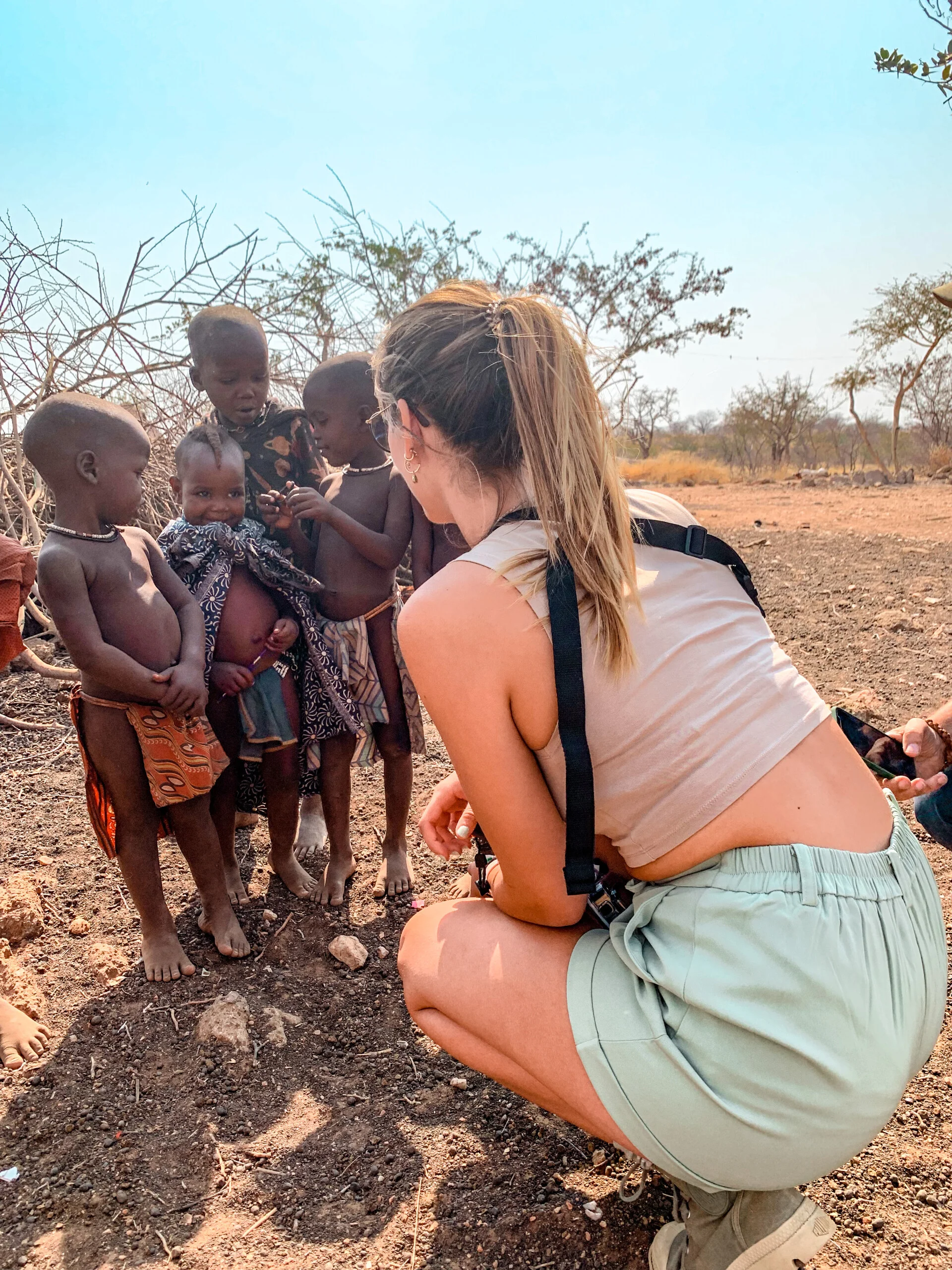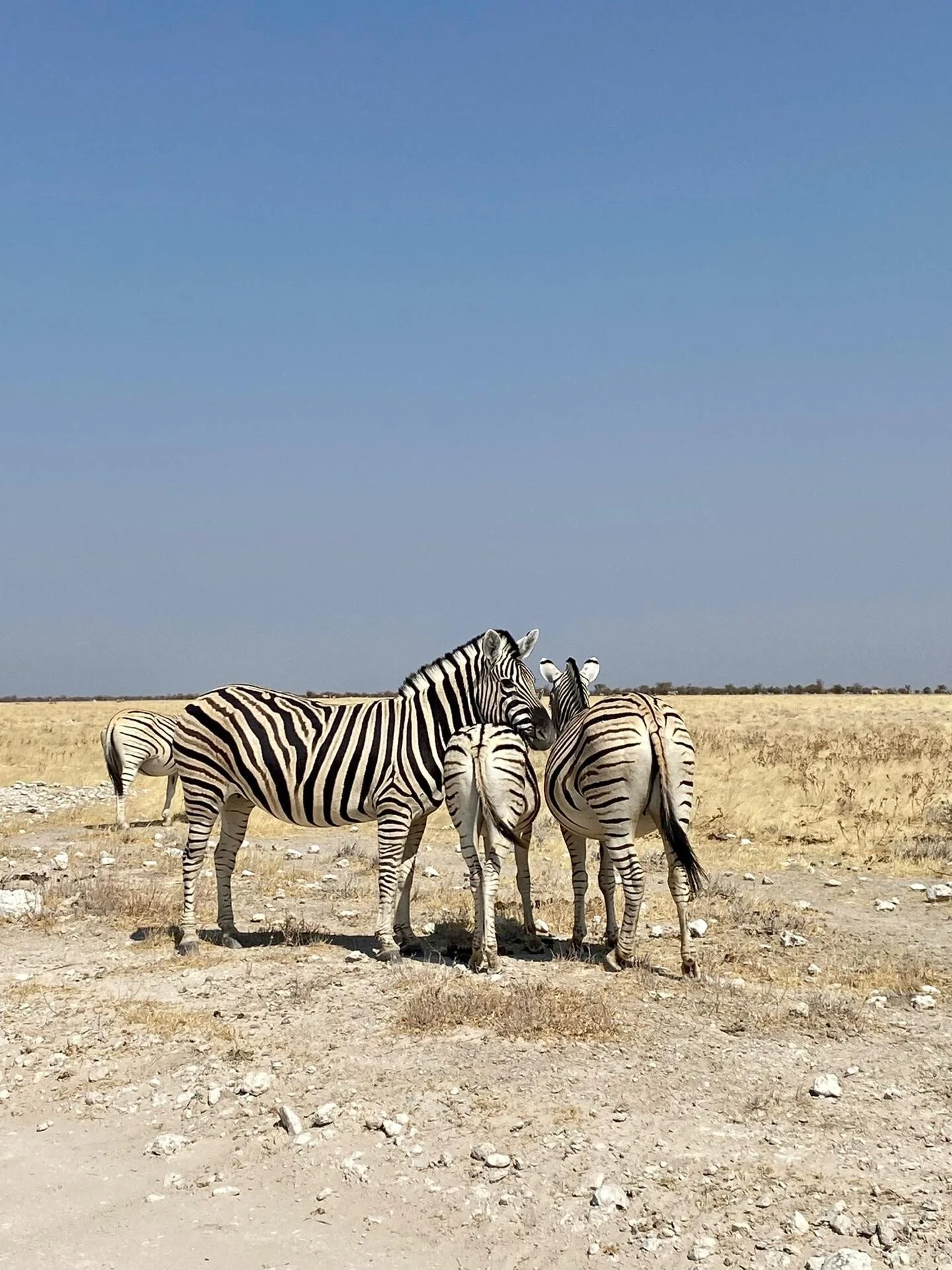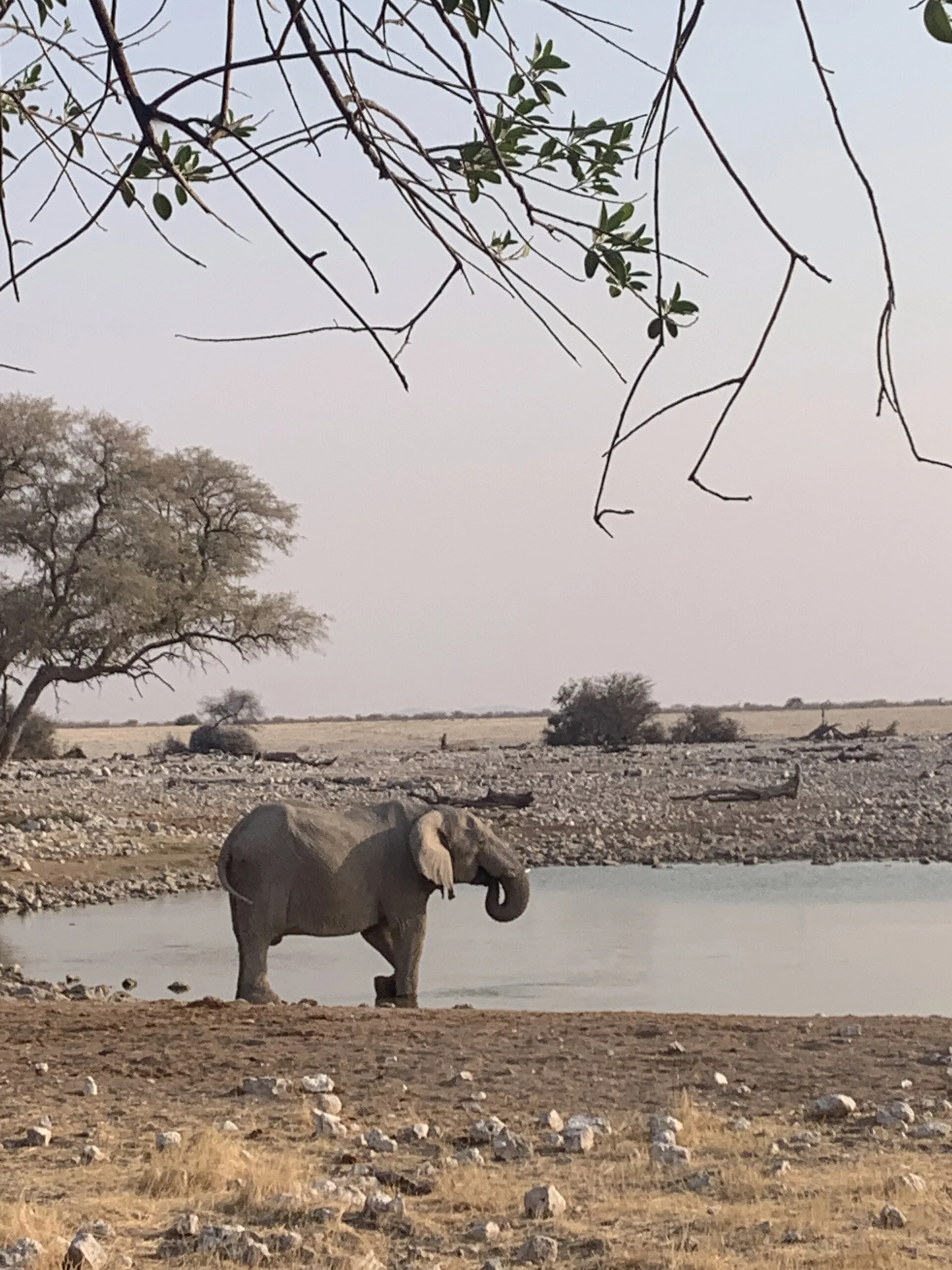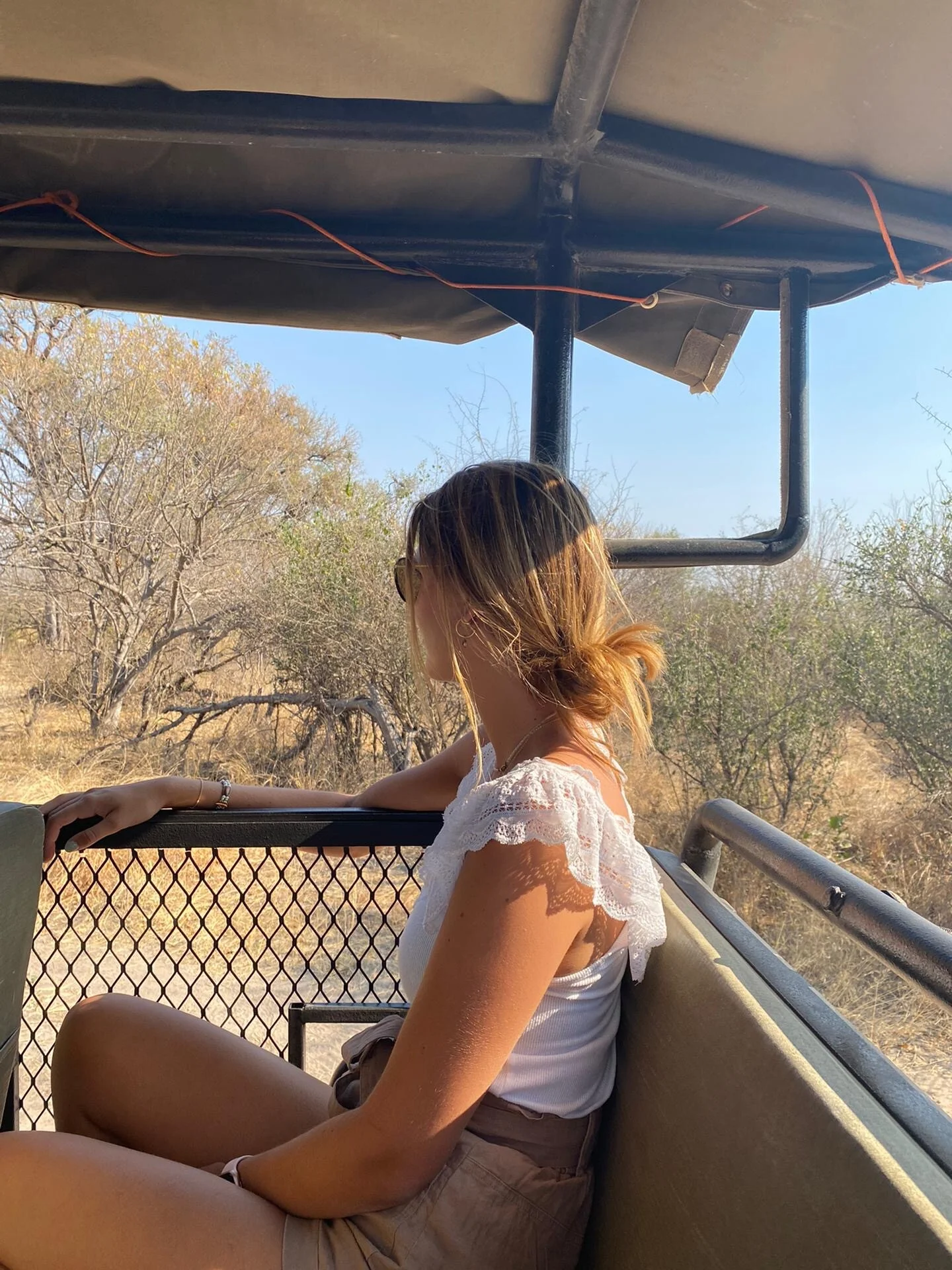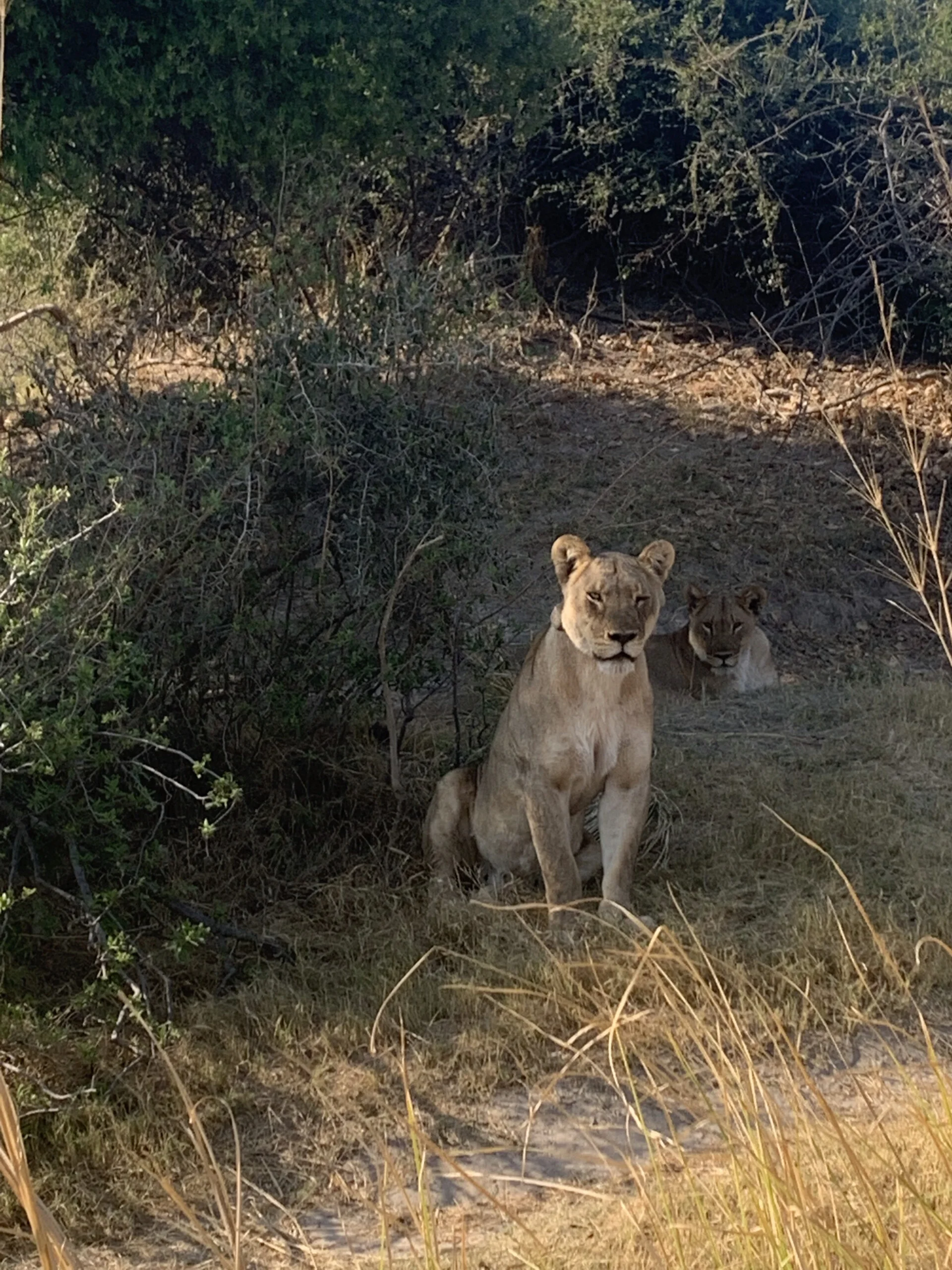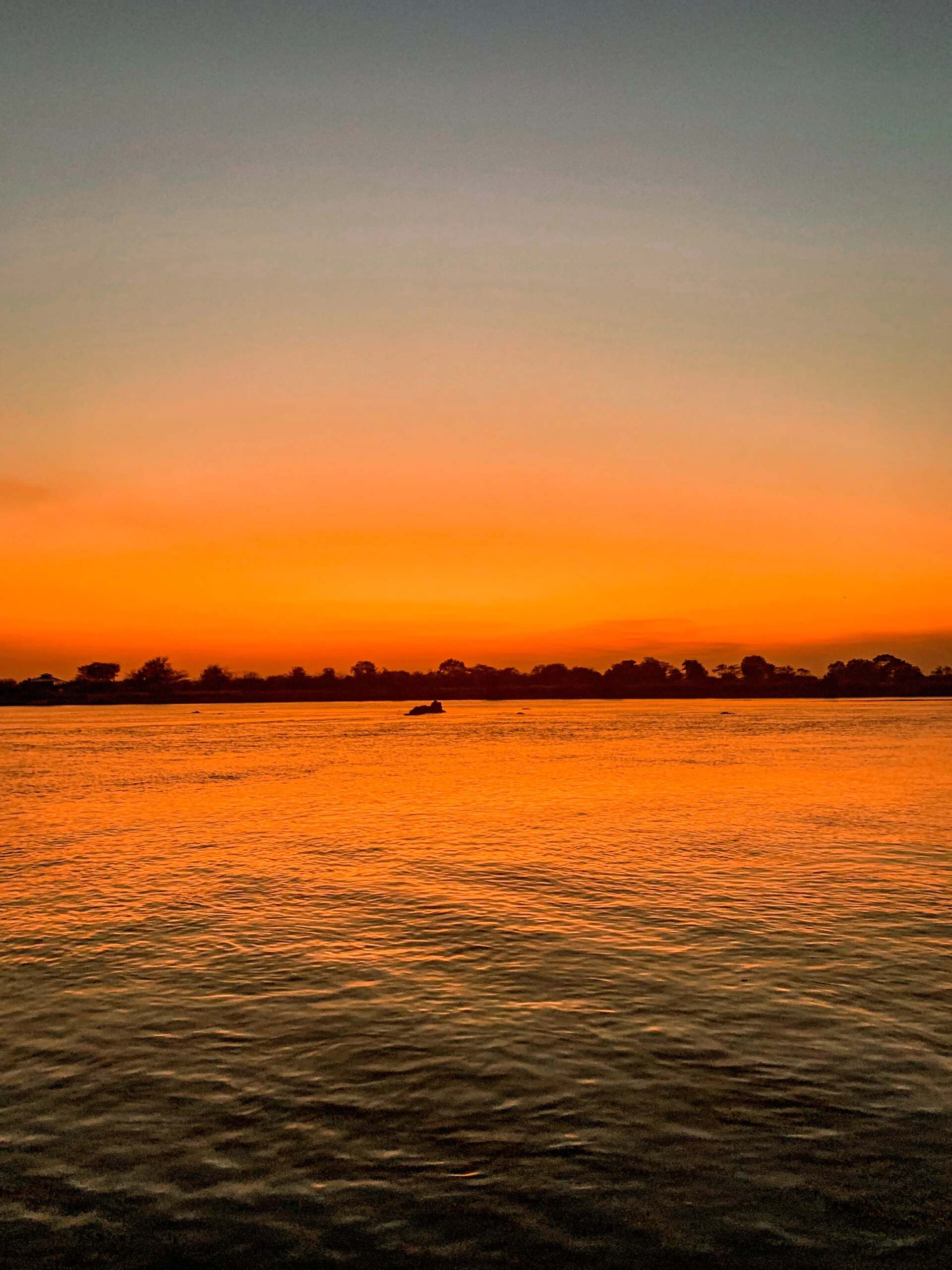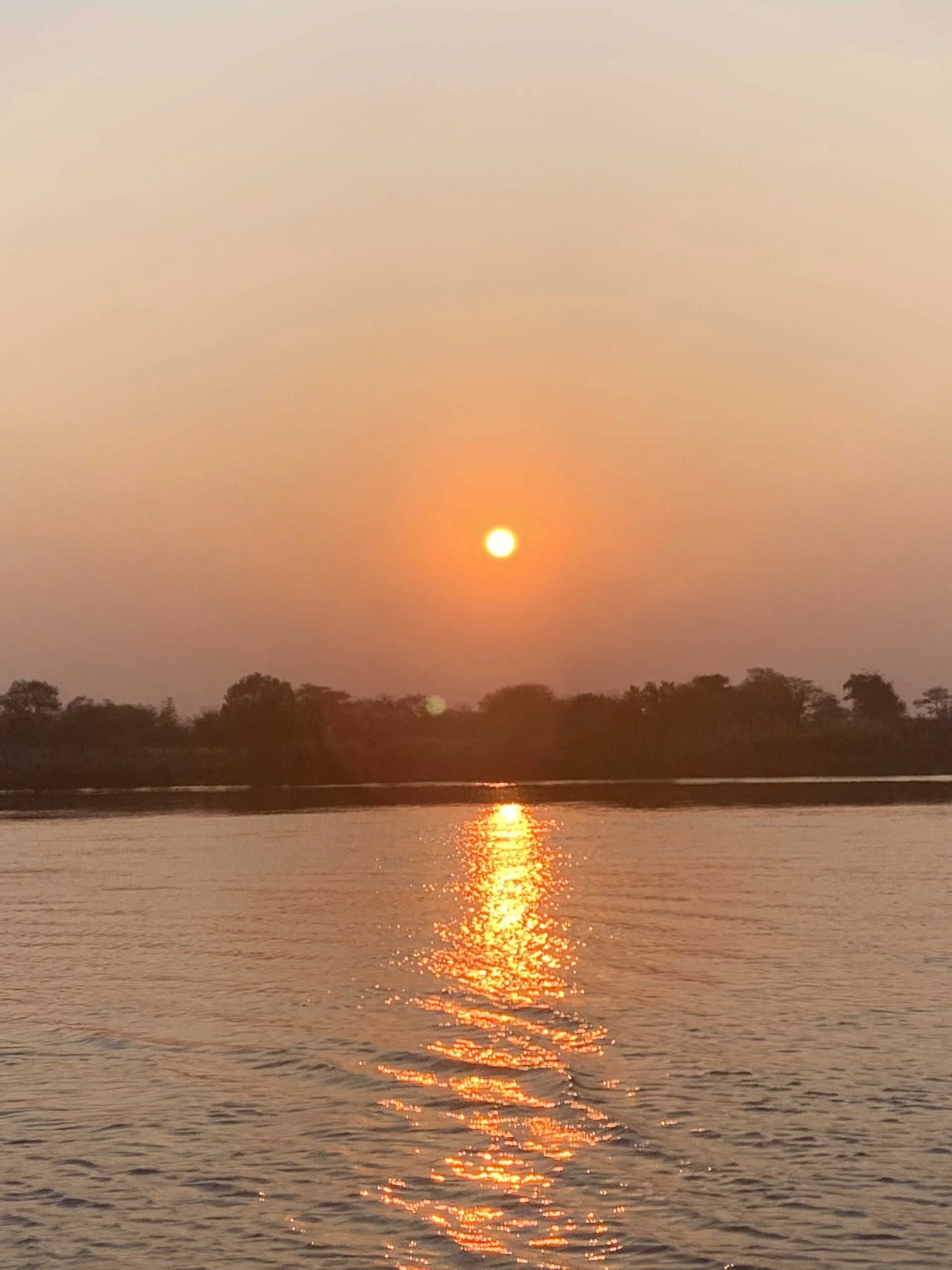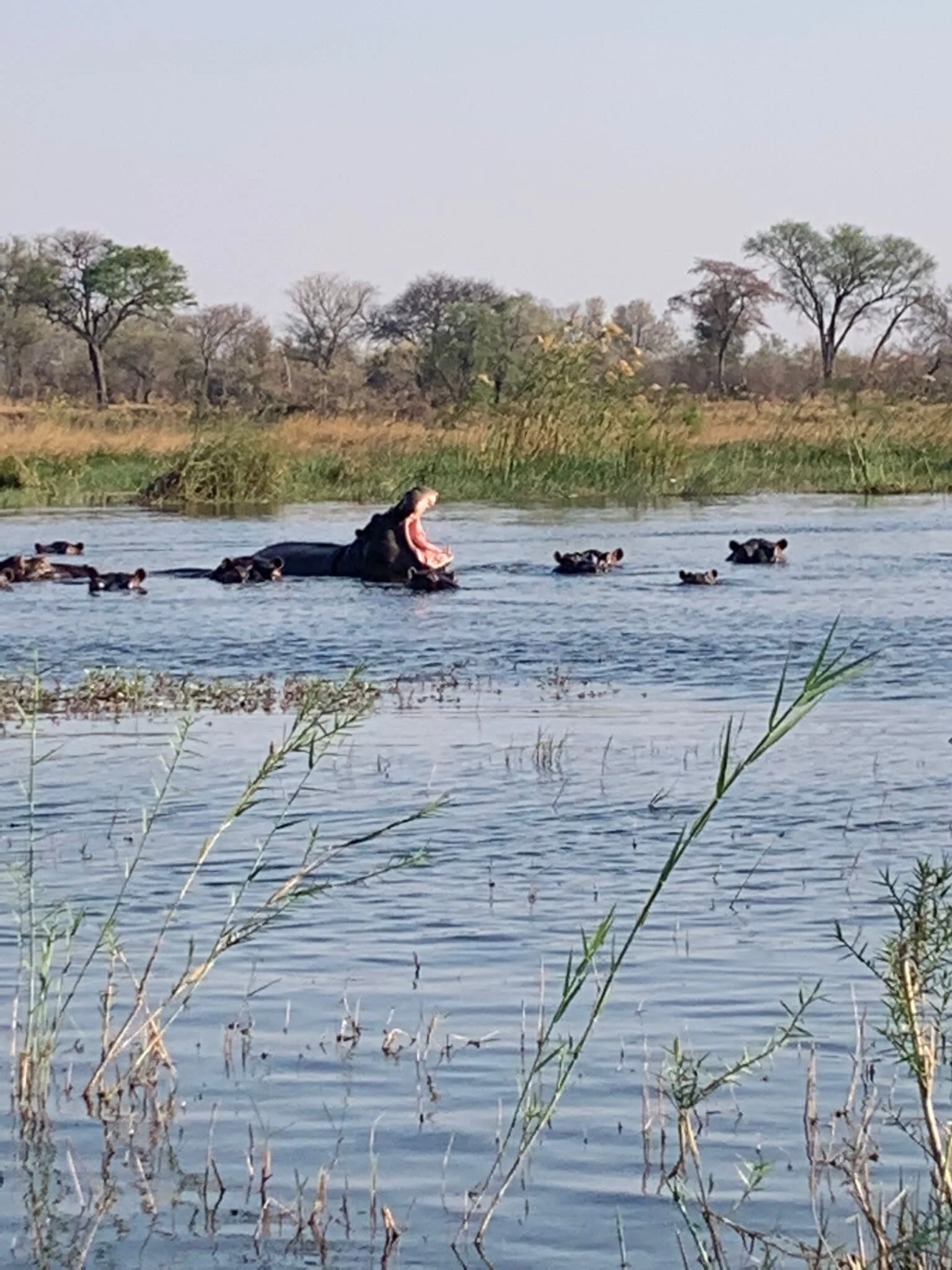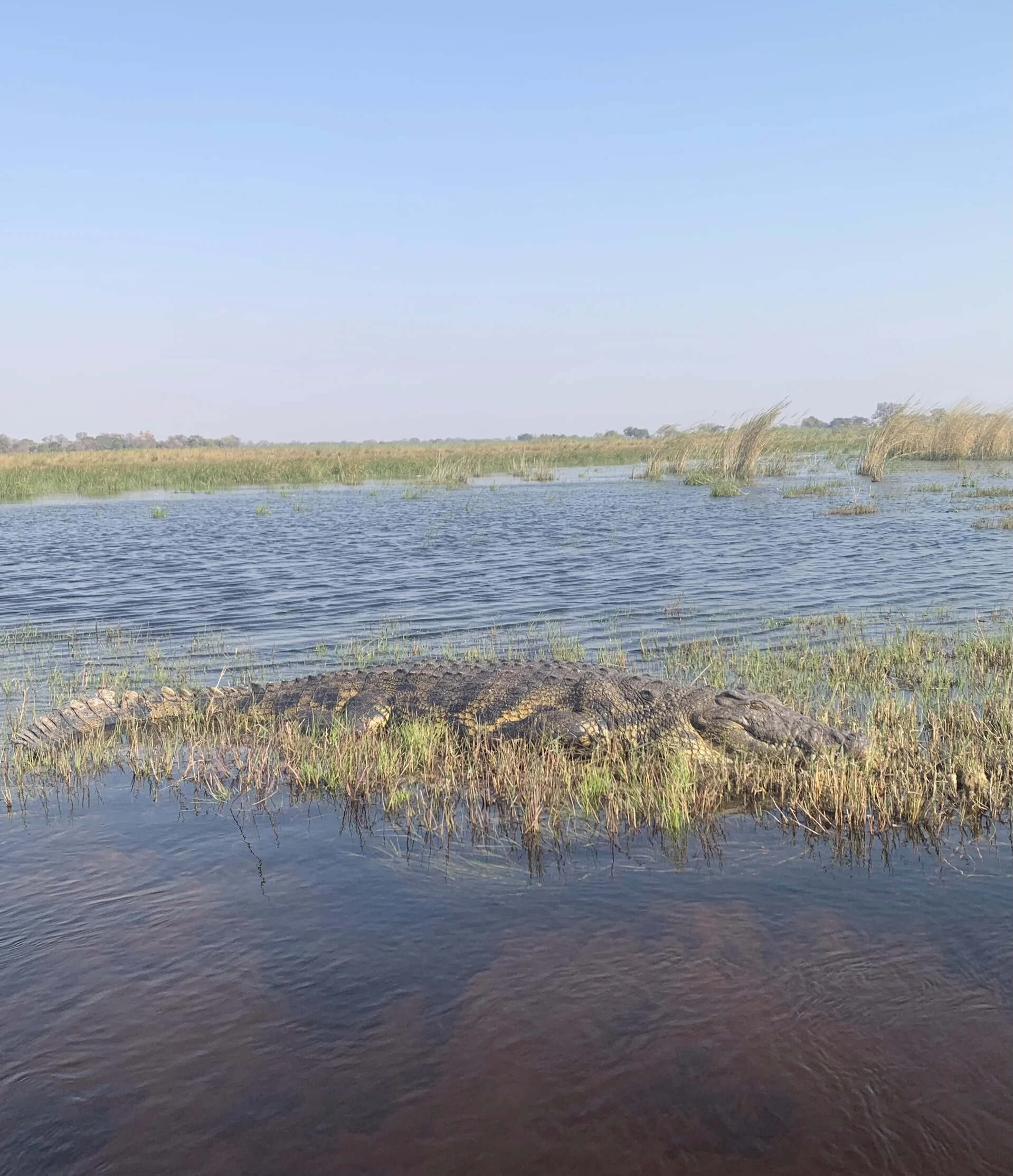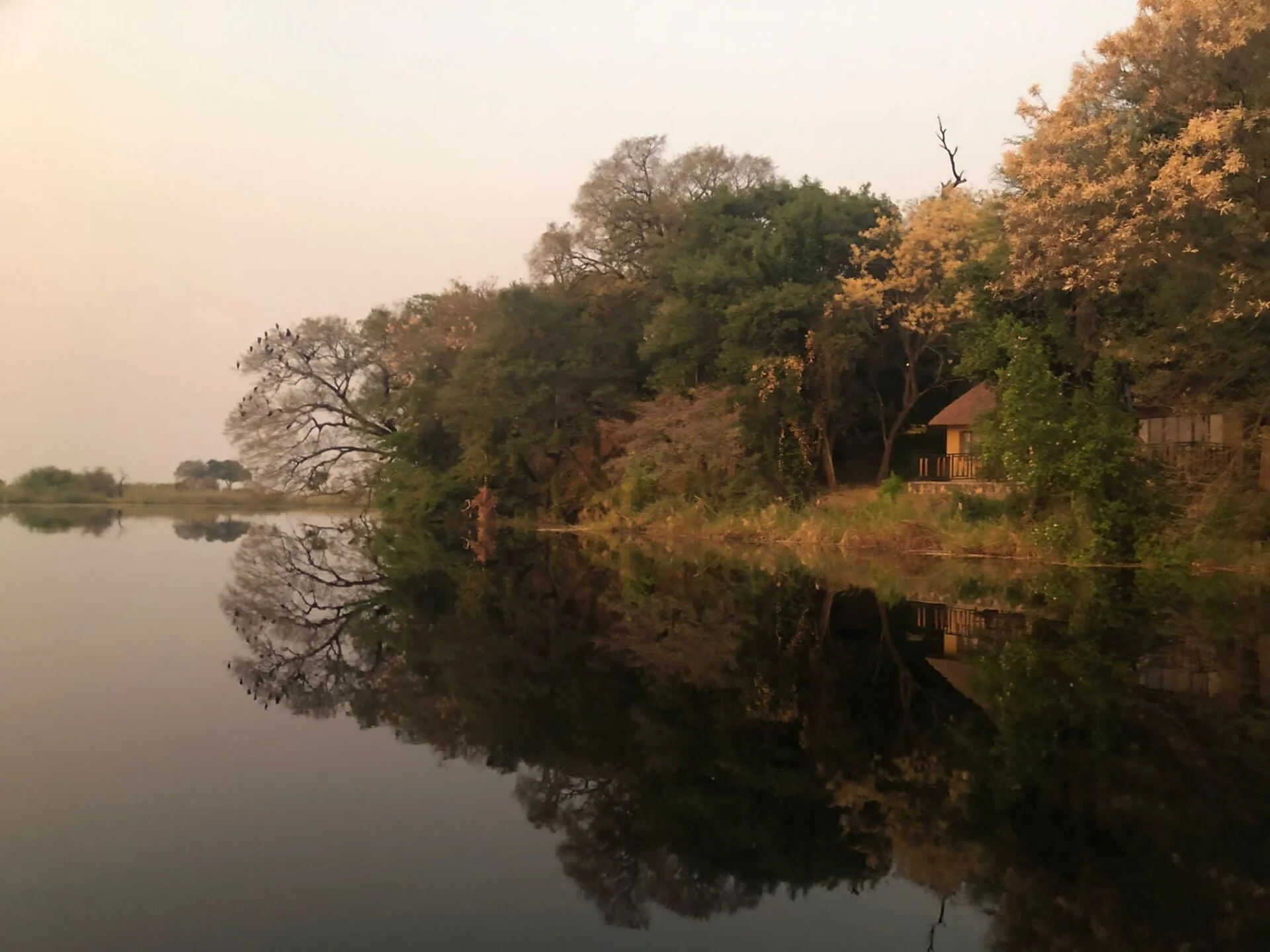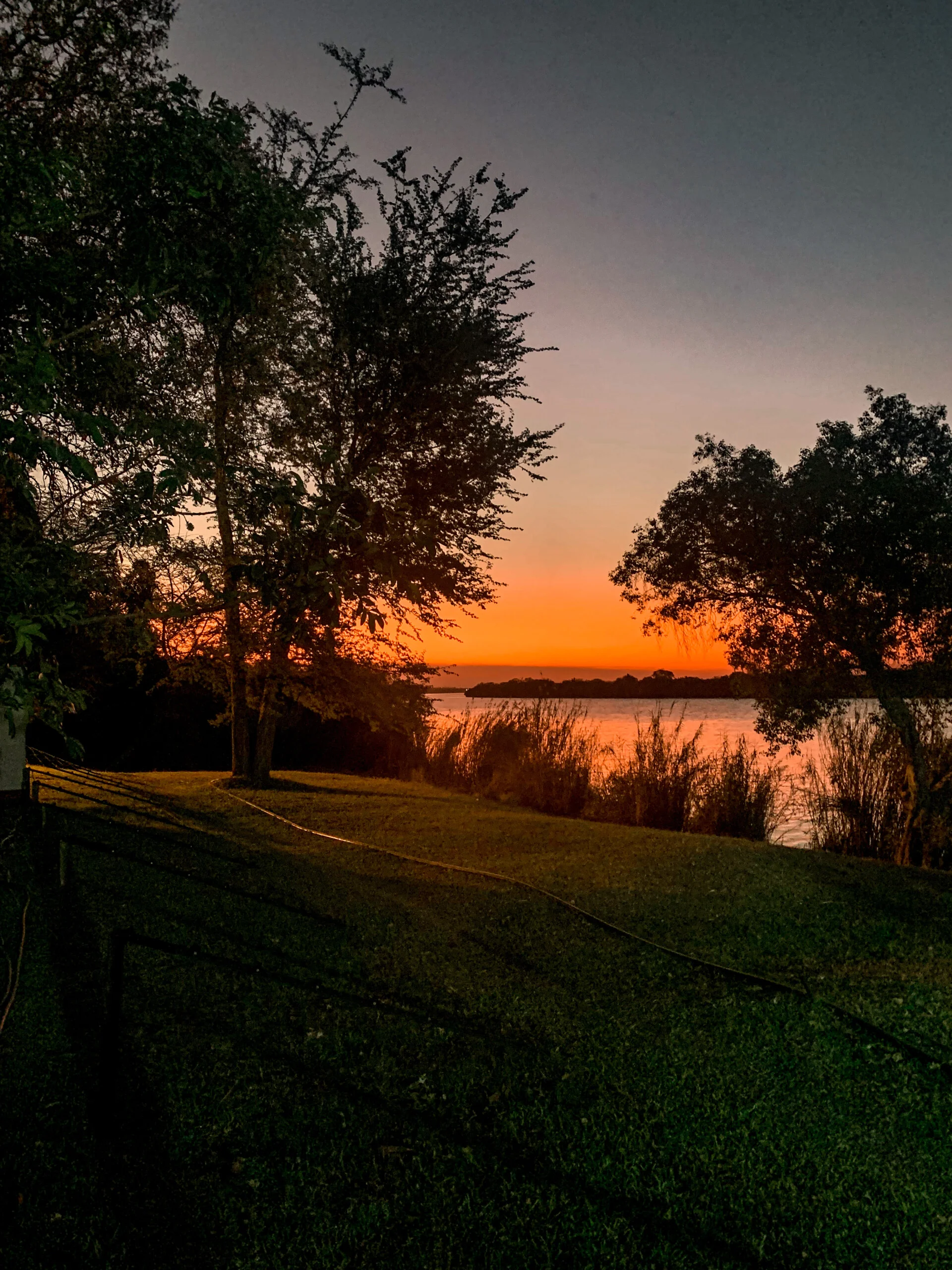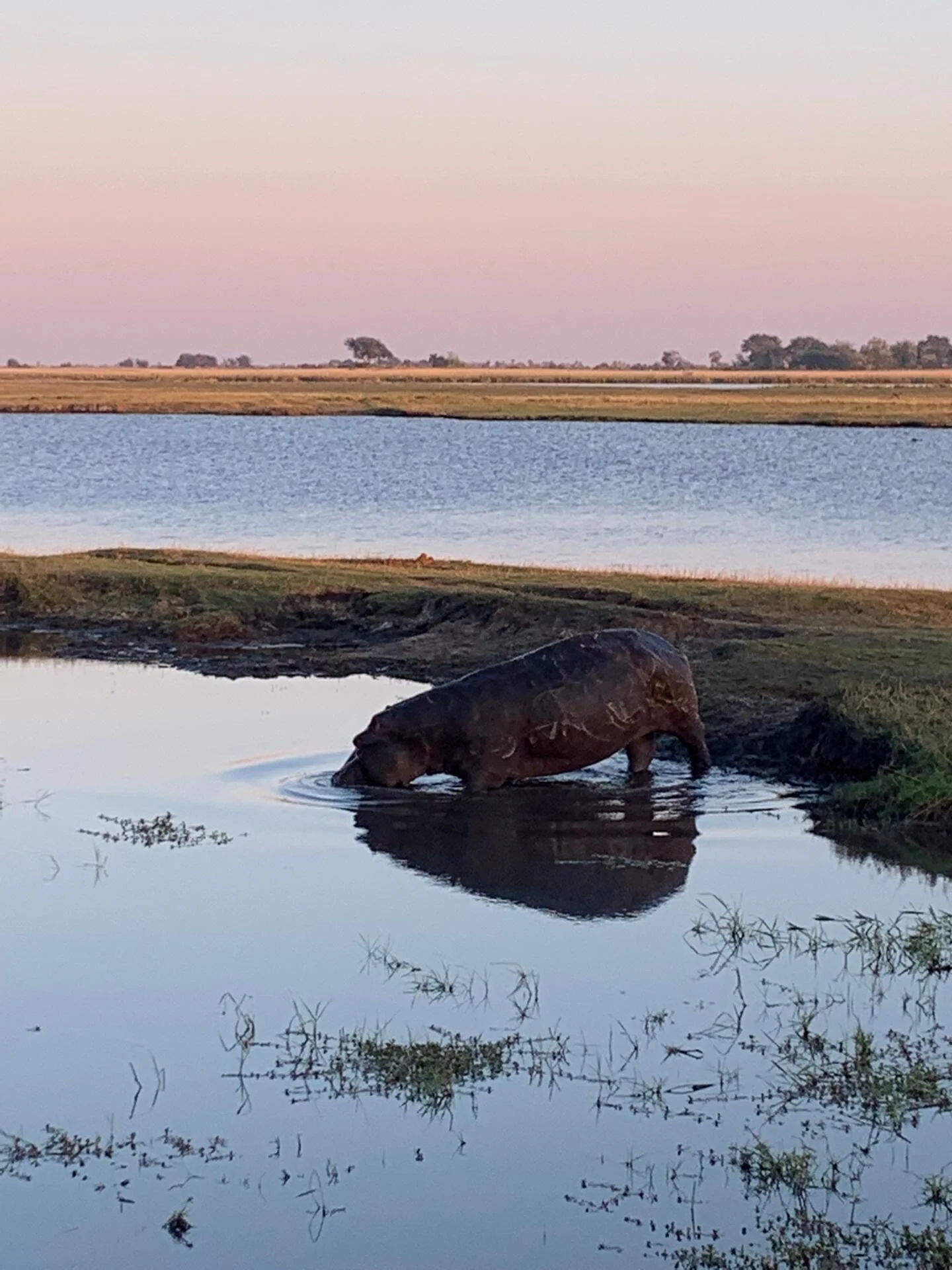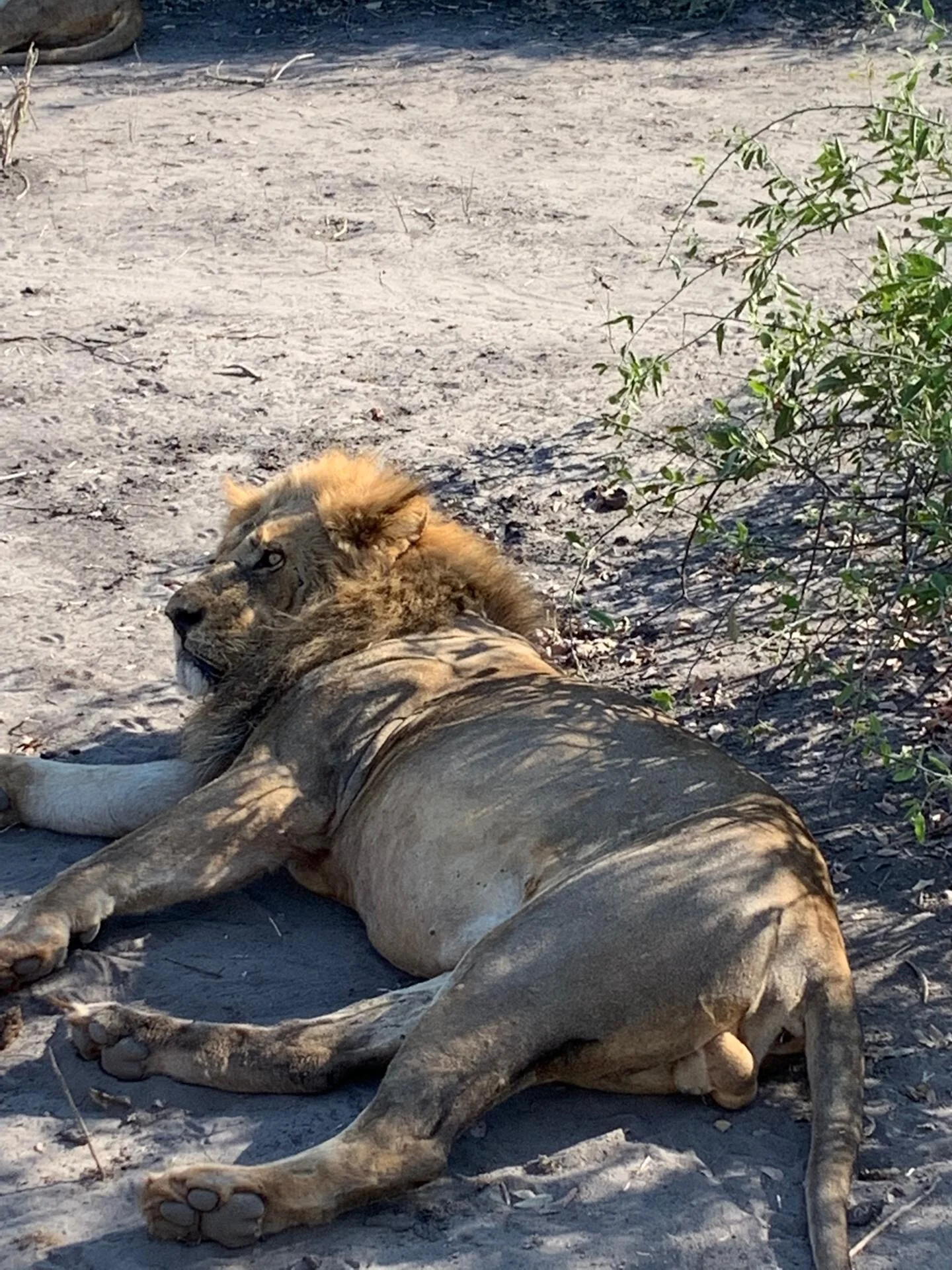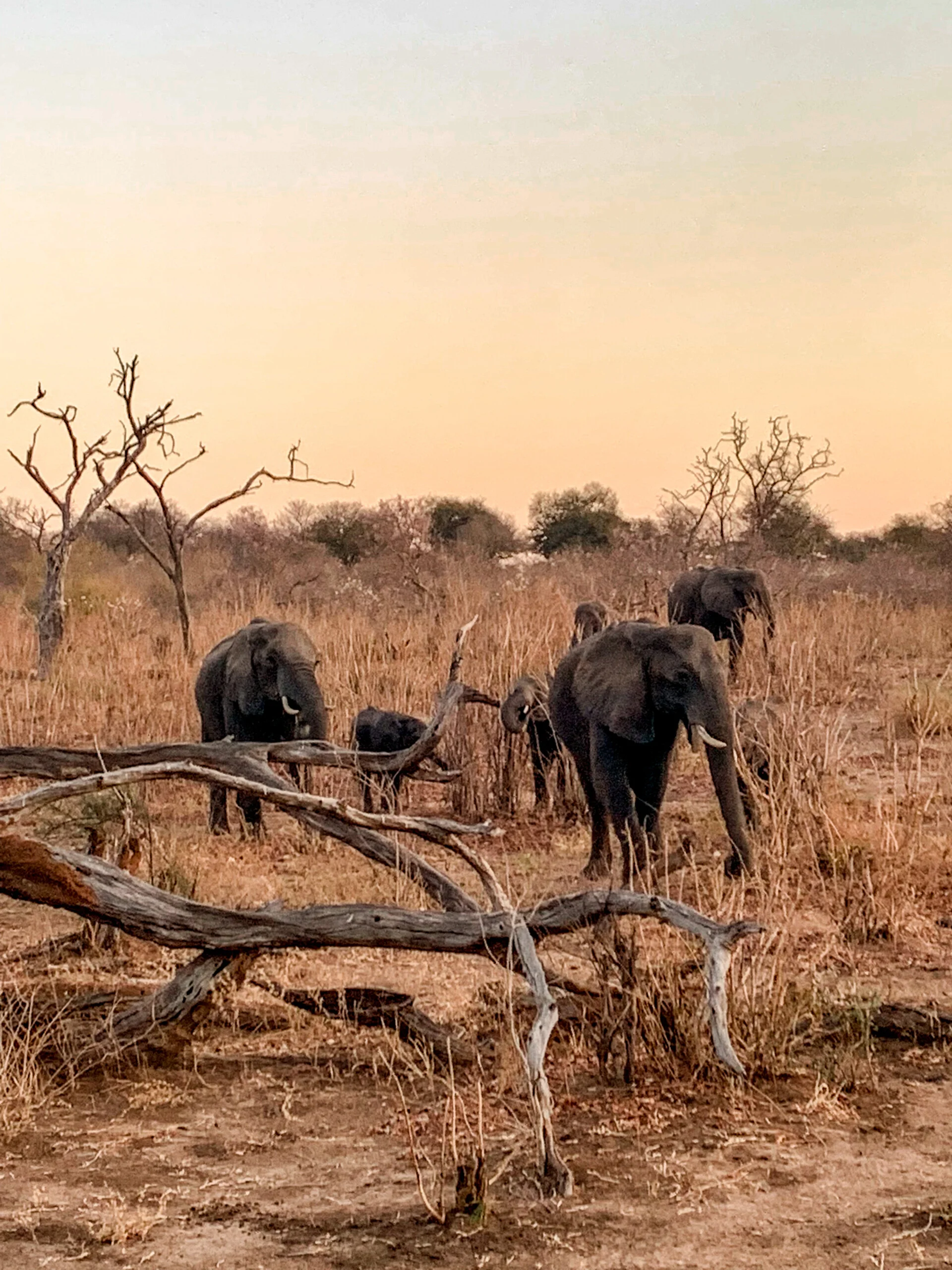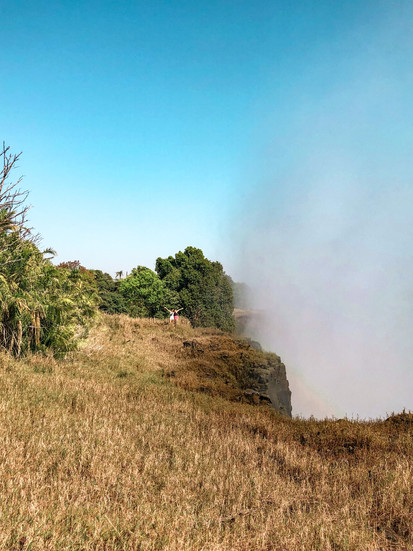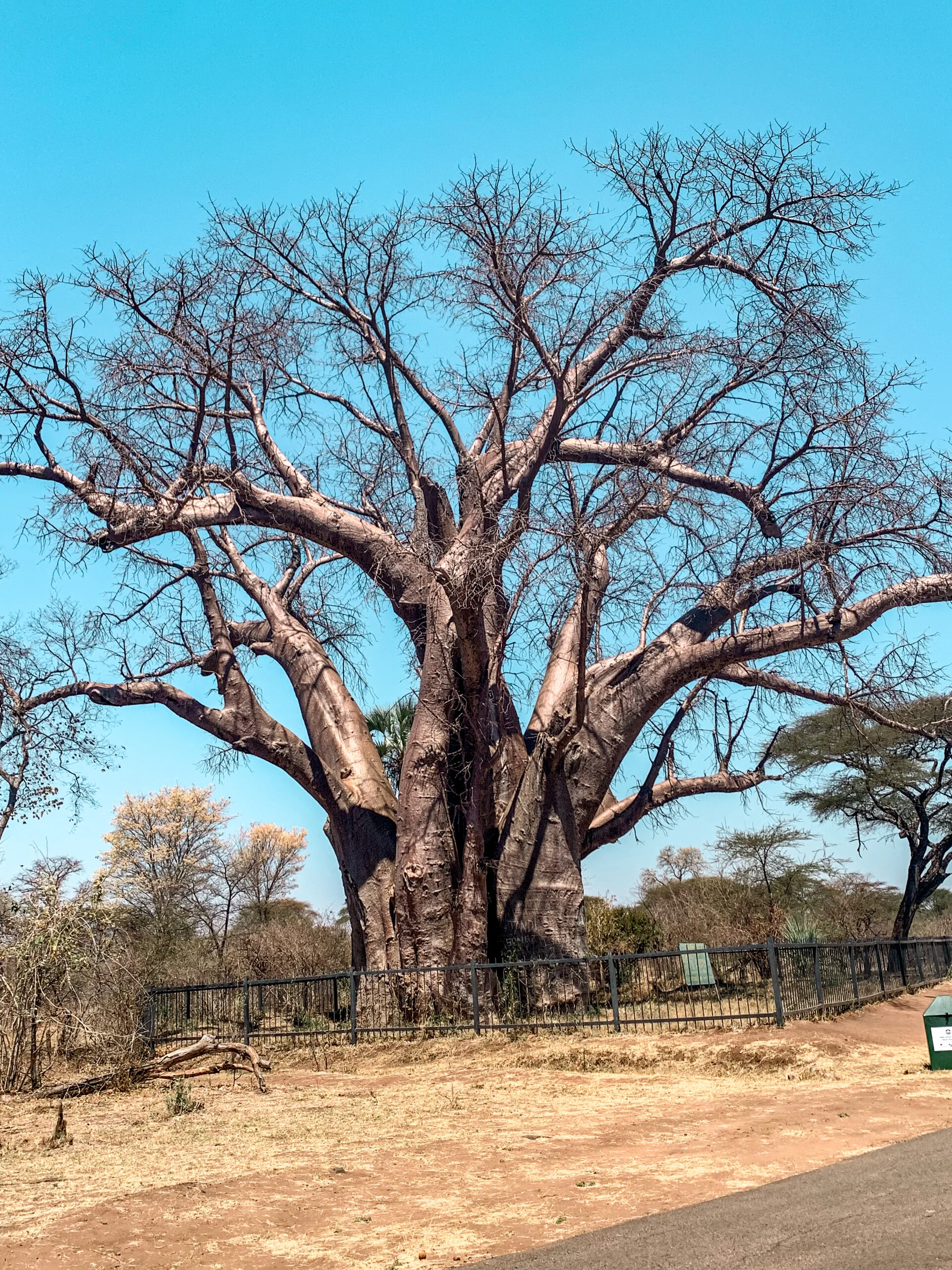To do Tips Namibia
- Margaux Delang
- 25 sep 2024
- 14 minuten om te lezen
Namibia is a land of vast landscapes and endless adventure. From exploring the towering dunes of Sossusvlei and spotting wildlife on a safari in Etosha National Park, to discovering the dramatic coastline of the Skeleton Coast and the cultural richness of its local tribes, Namibia offers a variety of unforgettable experiences. Whether you're seeking thrilling outdoor activities or peaceful moments in nature, this guide will help you uncover the best things to do in Namibia.
Here are some of the places in Namibia that we visited
Erindi
After a long flight, we finally touched down at Windhoek airport. Once we picked up our car, we were ready to begin our journey, with our first destination being Erindi. What was originally planned as a three-hour drive turned into a six-hour adventure, as we relied too heavily on the GPS instead of following our written route. After a long and eventful drive—where we even had to avoid some giraffes in the dark—we eventually arrived at our first lodge in Erindi late at night.
Erindi Game Reserve, located southeast of Omaruru, is a breathtaking nature reserve in northwestern Namibia. The name "Erindi," meaning "place of water," hints at the lush, vibrant landscapes that await. Spanning over 79,000 acres, this natural paradise offers a diverse range of habitats, from grasslands and savannas to rugged mountains, all home to an incredible variety of wildlife. Beyond its stunning scenery, Erindi is also renowned for its commitment to ecotourism, its rich cultural heritage, and its efforts to support the local community.
Visitors can explore this unique reserve through activities such as cultural village walks, viewing ancient San rock art, guided bush walks, and thrilling game drives, where you’ll have the chance to see elephants, giraffes, rhinos, lions, hyenas, zebras, kudu, wildebeest, and countless other species.
For an unforgettable experience, don't miss the opportunity to go on a night safari, where you can witness the fascinating nocturnal creatures that come to life under the cover of darkness.
Windhoek
Windhoek, the bustling capital of Namibia, has been the beating heart of the country since 1891. Located in the center at some 1,650 meters above sea level, this city proudly welcomes more than 320,000 residents. Just 45 kilometers from the city is Namibia's international airport, Hosea Kutako International Airport, which is a major gateway to the adventure Namibia has to offer. Windhoek welcomes travelers with open arms and offers a tasty selection of restaurants, a wide range of stores and an abundance of accommodations. Stroll the streets and discover the captivating mix of historic architecture and modern buildings that give this city its unique character.
Since we stayed only 1 night in Windhoek, we didn't do much more than walk around & eat here.
If you're visiting Windhoek, a stop at Joe's Beerhouse is a must. This legendary spot is more than just a restaurant; it's a lively cultural hub that has been welcoming locals and travelers alike for decades. Known for its unique rustic charm and vibrant atmosphere, Joe's Beerhouse offers a true Namibian experience.
With its eclectic decor, including old memorabilia, wooden beams, and outdoor seating, it’s the perfect place to unwind after a day of exploring. The menu is hearty and diverse, featuring a range of local and international dishes, from wildebeest steak and game platters to more familiar pub fare. The selection of beers, especially local brews, is extensive, making it an ideal spot to enjoy a cold drink while soaking in the vibrant vibe of the place.
Whether you’re there for the famous Namibian game meats, a cold beer, or to meet fellow travelers and share stories, Joe’s Beerhouse is an unforgettable Windhoek institution that captures the spirit of Namibia.
Sesriem
Welcome to the breathtaking desert wilderness of Sossusvlei! Although there are no accommodations in this vast area, nearby Sesriem, just 65 kilometers away, offers an ideal base for adventurers looking to explore the dunes. Here you will find camps and lodges offering comfortable resting places amid the majestic landscapes.
So step out of your comfort zone, marvel at the natural splendor and dive into the rich history of Sesriem and its breathtaking surroundings.
Sesriem Canyon
An absolute highlight of this area is the Sesriem Canyon, a wondrous creation of nature that carves deep gorges into the rocks by the force of water. It is an experience best explored on foot, where you are surrounded by sheer rock walls and fascinating wildlife. Birds frolic among the rocks while lizards deftly maneuver along the ledges.
The origin of the name "Sesriem Canyon" is as intriguing as its appearance. Early settlers used this canyon as a water source and used six lengths of leather, or "ses belt" in Afrikaans, to lower buckets into the water at the bottom of the canyon. This unique history adds another layer of meaning to this enchanting place.
After checking into our hotel in Sesriem, we were immediately ready for adventure and headed toward the less visited but beautiful Sesriem Canyon. This magnificent gorge with impressive rock formations is often overlooked by visitors rushing to explore the area. But for those who enjoy some scrambling and love a unique experience, this is definitely a must-see.
Located just outside the national park, there is ample parking available for visitors. The hike itself is only about 5 km long (back and forth through the canyon) and offers an easy route once you reach the bottom of the canyon. Allow about an hour for a leisurely visit to the canyon, where you can enjoy the peace and beauty of this hidden treasure in the desert.
Sossusvlei & Deadvlei
Welcome to the enchanting world of Sossusvlei, a clay valley that shines like a jewel amidst the vast Namib Desert. Located in Namib-Naukluft National Park in Namibia, this breathtaking piece of nature is fed by the Tsauchab River and is known for its imposing red sand dunes that dominate the landscape, making you feel as if you are in a sea of sand.Here, in this majestic nature reserve, you will find the highest sand dunes in the entire country, displaying unique colors that transform with the movements of the sun.
The spectacle that unfolds at sunrise and sunset is truly breathtaking and should not be missed. Fortunately, you are allowed to walk freely in Sossusvlei and even climb the sand dunes, some of which have even been given their own names, such as the impressive Big Daddy next to Deadvlei, with a height of a whopping 325 meters, and the iconic Dune 45, which offers spectacular views at sunrise.
An unmissable highlight of Sossusvlei is Deadvlei, an intriguing stretch of valley that is completely sealed off from water, leaving the once proud trees that once graced it now petrified and lifeless, like silent witnesses of time.
To experience the magical moment of sunrise in Sossusvlei, we left Sesriem early, just before five in the morning, arriving at the parking lot around six. From here you can be chauffeured to the start of the hike, usually in an open jeep that maneuvers you through the sandy terrain. Given the early hour and the still chilly temperatures of about 3 degrees Celsius, it is essential to dress warmly enough. As the sun rises, however, the temperature will rise steadily, allowing you to continue the hike comfortably.
Walking in the sand can be tiring, so it is advisable to be well on your feet if you want to climb the dunes. But even if that is not possible, you can still enjoy the splendor of Deadvlei and its surroundings.
In short, a visit to Sossusvlei is an unforgettable experience that takes you into the raw beauty of the Namib Desert, where time seems to stand still and nature reveals its most impressive works of art.
Swakopmund
In Swakopmund, a charming town where German influences still linger, founded during Namibia's colonial period, the architecture is steeped in history. The Swakopmund Museum offers a fascinating glimpse into this era, as well as the unique flora and fauna of the Namib Desert.
A must-try is the 'Living Desert' tour, provided by Photo Ventures. This adventurous journey takes you through the breathtaking dunes in a 4x4 vehicle, with a guide who passionately narrates and brings the beauty of the surroundings to life. An unforgettable experience, albeit not suitable for those prone to motion sickness.
For the adventurous souls among us, Swakopmund offers a range of optional activities, from boat trips to spot dolphins and seals in Walvis Bay to sandboarding, quad biking, and skydiving. A true paradise for adrenaline enthusiasts!
In the heart of the city, around streets like Molke Street, Kaiser Wilhelm Street, and Post Street, you'll find a bustling center with shops, banks, and cozy cafes. The tourist information office, located at the corner of Kaiser Wilhelm and Roon Street, offers excellent assistance in planning your adventures.
After a day full of activities, it's delightful to relax by the coast, where you can enjoy a tasty meal and the soothing ambiance. However, do keep an eye on the temperature, as even in Swakopmund, it can get chilly, a valuable lesson we quickly learned.
Here's a fun foodie tip: Along the coast, you'll find a charming food truck named "Lekker Happie," serving up delicious street food of high quality. It's a must-visit spot for food enthusiasts looking to savor delectable bites while enjoying the scenic views of the coastline.
Damaraland
Damaraland is a captivating region characterized by rocky formations, dry riverbeds, and endless blue skies. The landscape is marked by rugged rocks and acacia trees, with towering peaks such as Spitzkoppe in the south (at 1,784 meters) and Brandberg (at 2,573 meters) dominating the scenery. This rocky terrain offers plenty of natural beauty to explore. However, the standout attraction of the region is undoubtedly Twyfelfontein. This valley is adorned with countless rock engravings and carvings, offering a glimpse into ancient artistry. The name "Twyfelfontein" translates to "Doubtful Fountain," reflecting the uncertainty of whether water would be present in the valley.
In both the northern and southern parts of Damaraland, visitors have the chance to encounter desert-adapted elephants roaming the area. There's ample opportunity for exploration in this stunning part of Namibia.
Himba Tribe
The following day, we embarked on a visit to the Himba tribe, where we were guided through their village by a local, providing us with insight into their daily lives. The Himba are nomadic people who primarily rely on their livestock for sustenance.
The Kaokoveld region, where the Himba reside, is dry and rugged. Despite the challenges posed by the environment, the Himba have preserved their traditional way of life, largely untouched by modern influences. They traverse the land with their cattle and goats, supplementing their diet with maize, which they grind into mealie meal. Their diet mainly consists of milk mixed with mealie meal, with occasional additions of vegetables and meat from slaughtered animals, consumed in its entirety.
Appearance holds great significance for the Himba, reflecting their status within the community and their stage in life. A notable tradition involves the extraction of the two lower front teeth of both boys and girls at the age of ten, using a stick and a stone. Himba women never bathe but instead cover themselves with otjize, a mixture of goat fat, herbs, and ochre. This mixture gives them their characteristic reddish hue and also serves as protection against the sun.
This immersion in the Himba culture provided us with a deeper understanding of their way of life, making our journey through Damaraland truly enriching and unforgettable.
Etosha
Spanning an impressive 22,270 square kilometers, Etosha National Park is one of the largest and most remarkable wildlife reserves in Southern Africa. Its name, "Etosha," has been interpreted in various ways, including "place of mirrors," "place of dry water," or "the great white place." All these descriptions hint at the park's unique essence—an expansive, almost otherworldly landscape where the horizon seems to stretch endlessly, and the shimmering white salt pan dominates the scenery.
At the heart of Etosha lies its defining feature: the vast Etosha Pan, a colossal salt flat measuring 110 by 60 kilometers. This ancient lakebed, which covers about a quarter of the park's surface area, remains dry for most of the year, transforming into a glistening white expanse that reflects the African sun like a mirror. During the rainy season, the pan fills with water, attracting flamingos and other migratory birds in their thousands, turning the pan into a temporary oasis.
Etosha’s unique terrain—a blend of savanna, grasslands, and woodlands—supports an extraordinary diversity of wildlife. During the dry season, animals are drawn to the numerous waterholes scattered around the pan, offering visitors unparalleled opportunities for game viewing. The park is home to an impressive array of wildlife, including elephants, giraffes, zebras, rhinos, lions, leopards, cheetahs, hyenas, and a variety of antelope species such as springbok and kudu.
One of the highlights of visiting Etosha is the chance to witness black rhinos, a critically endangered species, which the park has helped to protect and preserve. The wildlife congregating around the waterholes offers an experience akin to a natural theater, where you can observe predator-prey interactions, family dynamics, and the sheer beauty of Africa’s wildlife.
The park’s various rest camps, such as Okaukuejo, Halali, and Namutoni, provide comfortable accommodations, often located near floodlit waterholes where visitors can enjoy 24-hour wildlife viewing. These camps offer guided safaris, but many travelers opt for self-drive safaris, following well-marked roads that wind through the park’s diverse ecosystems.
Etosha’s appeal is not just in its wildlife; it also offers a sense of timelessness and isolation. The vast salt pan, especially in the shimmering heat of midday, creates a surreal landscape that feels both alien and breathtakingly beautiful. The silence of the pan, broken only by the call of distant animals, enhances the feeling of being in one of the most untouched, primal parts of the world.
A visit to Etosha is more than just a safari—it's an immersion into the wild beauty and ancient rhythms of the Namibian landscape, where nature's drama unfolds against one of the most unique backdrops in Africa.
Onguma Game Reserve
Located just 9 kilometers from the Namutoni gate on the eastern side of Etosha, Onguma Nature Reserve sprawls across 20,000 hectares. The name 'Onguma' translates to 'the place where you never want to leave'. Over 30 species of animals call this reserve home, including kudu, giraffe, zebra, lion, and leopard. Safaris in Onguma are conducted by jeep, but if you prefer self-driving, you're conveniently close to the entrance of Etosha. The latest addition to the reserve is a family of black rhinos. Additionally, over 300 bird species inhabit the area. During the summer months, the reserve becomes a paradise for bird enthusiasts, with thousands of species migrating to wetter areas.
Grootfontein
Grootfontein is a large village set in a fertile environment, receiving between 450 and 650 mm of rainfall annually - considerably more than most parts of Namibia. This abundance of rain allows for extensive cultivation of crops such as maize, sorghum, cotton, and nuts. In the months of September and October, the streets come alive with the vibrant blooms of jacaranda trees, originally from South America and not typically fond of arid conditions. A visit to the Old Fort Museum (Das Alte Feste), dating back to 1896, is definitely worthwhile. Located a few kilometers outside the city, across from the rugby stadium on the road to Rundu, the museum features a permanent exhibition on local history.
Another remarkable attraction is the Hoba meteorite, the largest known meteorite on Earth. Discovered in 1920 on the Hoba farm, 24 kilometers outside Grootfontein on the D 2859 towards Otavi, this iron meteorite weighs approximately 60 tons. The impact of the meteorite is evident from the surrounding landscape, with mountains formed in its immediate vicinity. Researchers estimate that the meteor shower covered an area of around 2500 square meters. The meteorite lies alongside a public road, accessible by taking the C42 towards Tsumeb. After 3 kilometers, take the D 2859 and follow it for 15 kilometers until you reach a picnic area with information boards and a marked hiking trail.
During our visit, we stayed for just one night en route, taking the opportunity to rest and dine at the hotel's restaurant.
Divundu
The quaint village of Divundu, located approximately 200 kilometers east of Rundu, is nestled along the southeastern banks of the mighty Okavango River. This charming destination is the perfect gateway for exploring the region’s rivers, wildlife parks, and national reserves.
Visitors can enjoy activities like fishing or birdwatching on boat safaris, or venture into the nearby Mahango Game Park, where herds of elephants, hippos, buffaloes, giraffes, and a variety of antelopes roam freely.Another must-see attraction is the stunning Popa Falls, a dramatic series of rapids that beautifully punctuate the river's flow.
Divundu also serves as an excellent base for further adventures into Botswana and the renowned Okavango Delta.
During our stay, we opted for a sunset boat safari, where we got up close to hippos and observed an array of bird species along the riverbanks. The next day, we embarked on a thrilling game drive safari, which offered sightings of both the Big Five and the quirky Ugly Five.
Kwando River
Confusion often arises regarding Bwabwata National Park. If you can't find the park under its current name, you might also search for Caprivi Game Park. This name change has been in the works for quite some time, has now been officially implemented, but it has yet to gain widespread recognition.
A more familiar term for many is the Kwando Triangle or Susuwe Triangle, which is a notable section within the park where much of the wildlife is concentrated. This triangular area spans no more than 7 kilometers wide and is bordered by the Kwando River, making it an ideal location for observing diverse wildlife and experiencing the park's natural beauty.
Kasane (Botswana)
After our visit to the Caprivi Strip, we crossed the border into Botswana.
Botswana stands as one of the best-preserved wilderness areas on Earth, a land of untamed beauty. Characterized by stark contrasts between the abundance of water in the Okavango Delta and the barren expanse of the Makgadikgadi salt pans, the arid sand flats, and savannas. It is here that the Okavango, one of Africa's mightiest rivers, flows. The Okavango Delta, an ecological marvel, is formed as this river, instead of flowing to the sea as rivers typically do, comes to a dead end in the sands of the Kalahari Desert. This river delta is a constantly changing labyrinth of crystal-clear channels, lakes, lagoons, and overgrown islands, serving as an oasis for wildlife and for anyone who loves the authentic Africa. The vastness of this grand country, its isolation, and difficult accessibility pose a challenge for the motivated and adventurous traveler.
As there are no fences separating the village from the park, Kasane is actually part of the Chobe National Park. Animals such as elephants and hippos are often seen in Kasane. If you're looking for wildlife in the area, keep an eye out for the large dead trees along the Sedudu Valley Road, as these often serve as temporary shelter for leopards. These are not the only interesting trees in Kasane - the village is also home to an ancient baobab tree, whose trunk once served as a local prison. Kasane is the main town in the Chobe and Linyanti region.
Victoria Falls (Zimbabwe)
After two nights in Botswana, we crossed the border again, this time heading to Victoria Falls in Zimbabwe.
The waterfalls form a natural border between Zimbabwe and Zambia and are listed as a UNESCO World Heritage Site. They stretch an impressive 1.7 km wide and are approximately 100 meters high! Locally referred to as Mosi-oa-Tunya, or "the smoke that thunders", you can see the mist rising on the horizon from afar. The mist creates a microclimate in the park surrounding the falls, attracting smaller animals to the lush greenery. There's a significant difference in water volume between the wet (February-June) and dry (July-January) months. In the fall, it's best to visit the falls from the Zimbabwe side. Be sure to bring a plastic bag to protect your camera from the splashing water. In Victoria Falls, you can partake in exciting excursions such as rafting, kayaking, abseiling down a 53-meter-high cliff in the canyon, or taking a helicopter or ultralight flight.
We opted to explore the falls by foot, walking from the hotel towards the falls and spending quite some time there. The views from various vantage points are breathtaking. Afterwards, we continued our walk to the Big Tree, a large 1500-year-old baobab tree near the Falls. This impressive tree, standing at 16 meters in diameter and 20 meters tall, is roughly 2 km from the river, the falls, and the island where Livingstone arrived in a 'makoro' dugout canoe and made landfall to write his records. Apart from being well-known, this impressive tree is possibly the oldest and biggest baobab in Zimbabwe.
The entire walk, including the journey back to the hotel, covered approximately 15 km, providing a half-day activity.
Other than that, we didn't do much in Zimbabwe except for some relaxation by the hotel pool.
